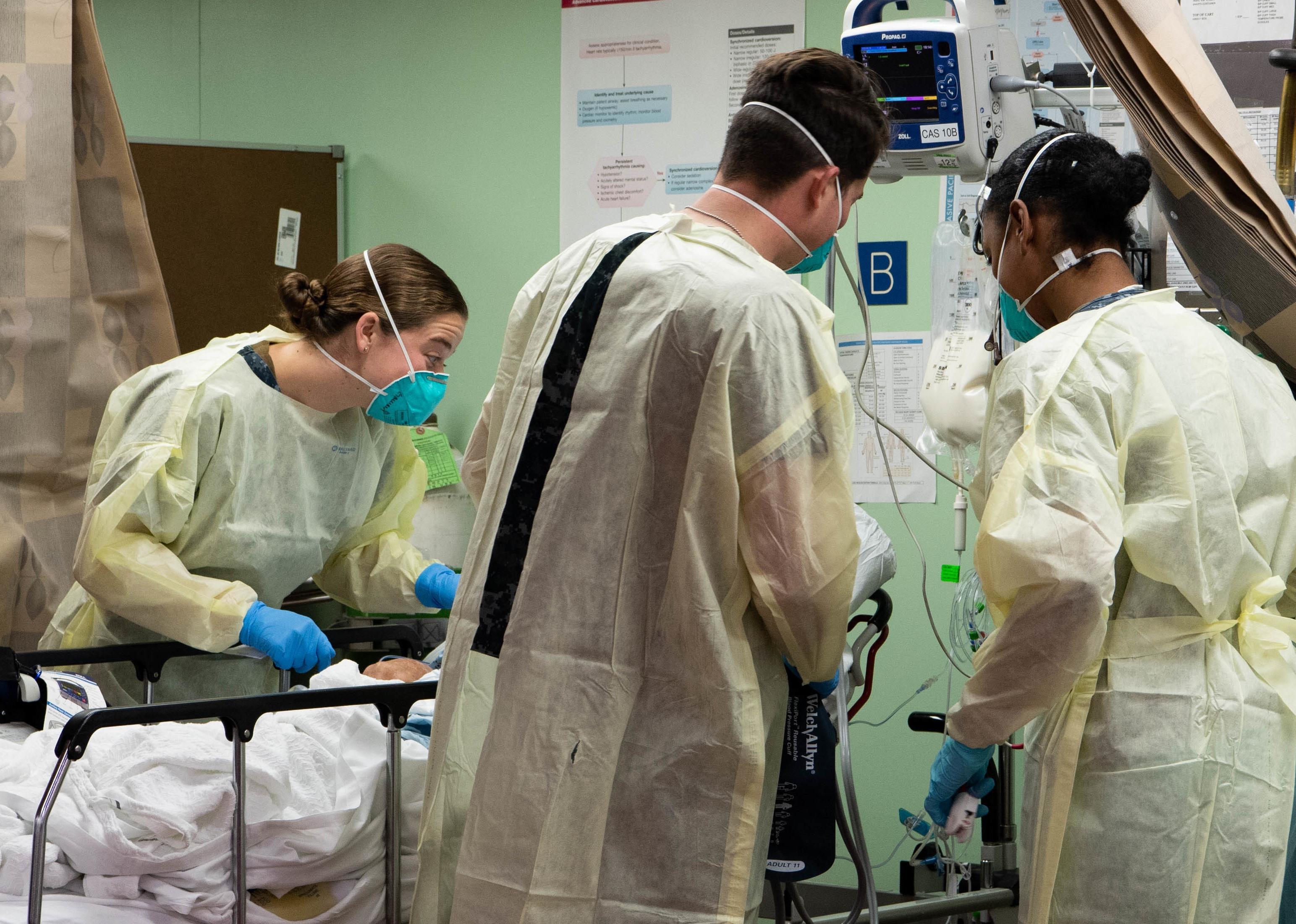
How COVID-19 is impacting people of color in every state
How COVID-19 is impacting people of color in every state
COVID-19 has disproportionately affected communities of color across the United States because of social inequalities and inequalities in the health care system that have existed for a long time.
Minorities are more likely than whites to lack health insurance and have less access to health care. And some people of color may be more distrustful of the health care system. People of color are also more likely than whites to have underlying health conditions such as hypertension, Type 2 diabetes, and obesity that predispose them to complications from COVID-19.
Certain minority groups are disproportionately represented in occupations that are considered essential, such as health care workers; grocery store, delivery, and public transportation employees; and farm and factory workers.
To do a deep dive into the demographics of COVID-19 cases and deaths across the country, Stacker consulted the COVID Racial Data Tracker, a collaboration between the COVID Tracking Project at The Atlantic and the Boston University Center for Antiracist Research. The COVID Racial Data Tracker compiles race and ethnicity data reported by state health departments and organizes this data into standardized labels; data in this story is cumulative as of Dec. 13, 2020. The story also uses the COVID Racial Data Tracker's Infection and Mortality charts, which show how different racial groups are disproportionately impacted from state to state.
Forty-eight states and Washington D.C report demographic data for both COVID-19 cases and deaths. But North Dakota only reports demographic data for COVID-19 cases, and New York only reports demographic data for deaths. And New York City reports demographic data separately from the rest of New York State. The COVID Tracking Project has combined these figures. Cases and deaths in each state have been population-adjusted and compared to the overall state populations for each race/ethnicity using the Census' American Community Survey, 2018 five-year estimates.
For states with lower case and death counts, such as some in the Midwest, race figures may suffer from small numbers, or the belief that small samples should resemble the population from which they are taken. These figures are marked with asterisks on the slide charts. Some states categorize their Hispanic or Latino population as a racial group, while some categorize it as an ethnic group; in this story, it has been standardized to the same combined categories—white alone, Black alone, Asian alone, Hispanic or Latino, and so on—used by the COVID Tracking Project.
Continue reading for a look at how COVID-19 is impacting people of color in every state.
Editor's note: Betsy Ladyzhets, a research associate at Stacker who worked on this story, volunteers for the COVID-19 Tracking Project.
Understanding COVID-19 with Stacker:
From Wuhan to the White House: A timeline of COVID-19's spread
How vaccines get made and approved in the US
15 ways doctors are now treating COVID-19
27 factors that make you vulnerable to COVID-19
35 COVID-19 symptoms to be aware of
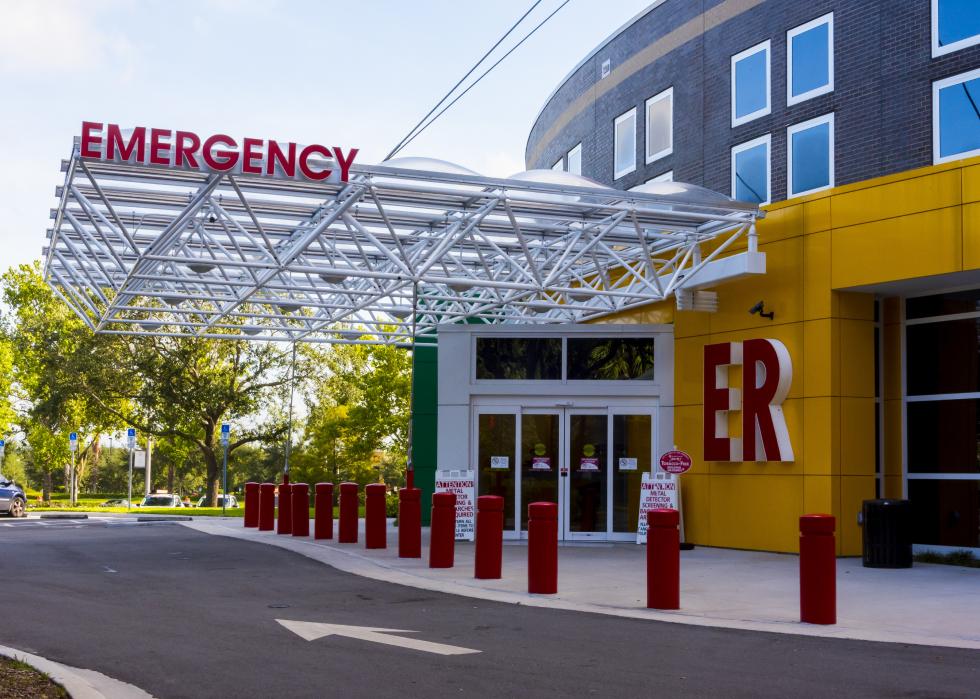
Alabama
State COVID-19 statistics as of Dec. 13:
- 295,631 total cases (6,077 per 100,000 population)
- 4,102 total deaths (84 per 100K)
Demographic breakdown:
- White: 2,738 cases per 100K, 63 deaths per 100K
--- 68.2% of state population, 30.7% of cases, 50.9% of deaths
- Black: 3,958 cases per 100K, 95 deaths per 100K
--- 26.6% of state population, 17.3% of cases, 29.9% of deaths
- Hispanic or Latino: 4,781 cases per 100K, 45 deaths per 100K
--- 4.2% of state population, 3.3% of cases, 2.2% of deaths
- Asian: 1,616 cases per 100K, 22 deaths per 100K
--- 1.3% of state population, 0.4% of cases, 0.3% of deaths
- Unknown: 42.3% of cases, 0.0% of deaths
On Nov. 20, the University of Alabama at Birmingham announced that the school’s Minority Health & Health Disparities Research Center had received a grant from the National Institutes of Health RADx-UP program to increase acceptance of and access to COVID-19 testing in communities of color in Jefferson County. The three components of this initiative are pre-testing engagement with the community; mobile testing in underserved areas; and culturally appropriate post-testing follow up.
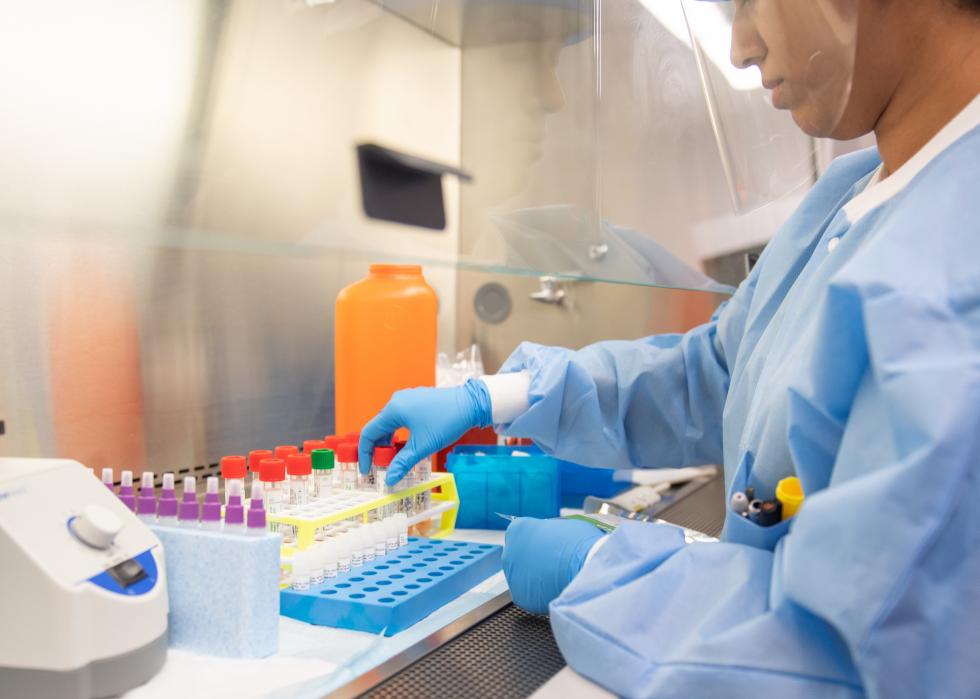
Alaska
State COVID-19 statistics as of Dec. 13:
- 41,143 total cases (5,571 per 100,000 population)
- 176 total deaths (24 per 100K)
Demographic breakdown:
- White: 2,517 cases per 100K, 13 deaths per 100K
--- 64.8% of state population, 29.3% of cases, 34.7% of deaths
- Black: 4,522 cases per 100K, 29 deaths per 100K
--- 3.3% of state population, 2.7% of cases, 4.0% of deaths
- Hispanic or Latino: 4,237 cases per 100K, 8 deaths per 100K
--- 6.9% of state population, 5.3% of cases, 2.3% of deaths
- Asian: 3,306 cases per 100K, 39 deaths per 100K
--- 6.3% of state population, 3.7% of cases, 10.2% of deaths
- Native American or Alaska Native: 7,524 cases per 100K, 61 deaths per 100K
--- 14.4% of state population, 19.5% of cases, 36.9% of deaths
- Native Hawaiian or Pacific Islander: 12,894 cases per 100K, 124 deaths per 100K
--- 1.2% of state population, 2.8% of cases, 6.3% of deaths
- Unknown: 22.5% of cases, 2.8% of deaths
Native Hawaiian and Pacific Islanders in Alaska, who mostly live in Anchorage, have been hit particularly hard by COVID-19. The Polynesian community in Alaska is very close-knit—gathering for worship or celebration and greeting each other with a hug are important cultural traditions. Community leaders have been working with state and local health officials to produce educational videos in Tongan and Samoan about how to curb the spread of the novel coronavirus.
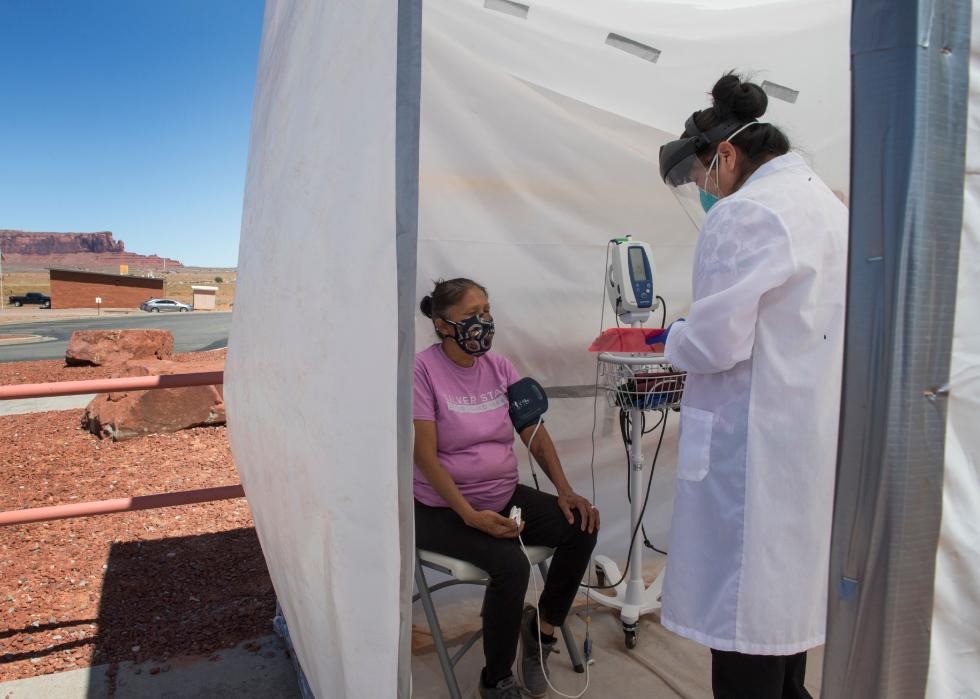
Arizona
State COVID-19 statistics as of Dec. 13:
- 408,442 total cases (5,880 per 100,000 population)
- 7,357 total deaths (106 per 100K)
Demographic breakdown:
- White: 2,311 cases per 100K, 61 deaths per 100K
--- 77.2% of state population, 30.3% of cases, 44.8% of deaths
- Black: 3,879 cases per 100K, 70 deaths per 100K
--- 4.4% of state population, 2.9% of cases, 2.9% of deaths
- Hispanic or Latino: 5,458 cases per 100K, 99 deaths per 100K
--- 31.1% of state population, 28.9% of cases, 29.1% of deaths
- Asian: 1,997 cases per 100K, 34 deaths per 100K
--- 3.3% of state population, 1.1% of cases, 1.1% of deaths
- Native American or Alaska Native: 6,881 cases per 100K, 245 deaths per 100K
--- 4.5% of state population, 5.2% of cases, 10.3% of deaths
- Unknown: 27.3% of cases, 10.1% of deaths
On Nov. 14, Navajo leaders in Arizona ordered a three-week lockdown because of uncontrolled spread of the virus on the tribe’s reservation. On Dec. 3, that order was extended until Dec. 28, with the possibility that it could be extended yet again if necessary.

Arkansas
State COVID-19 statistics as of Dec. 13:
- 185,702 total cases (6,209 per 100,000 population)
- 2,945 total deaths (98 per 100K)
Demographic breakdown:
- White: 5,024 cases per 100K, 92 deaths per 100K
--- 77.0% of state population, 62.3% of cases, 71.6% of deaths
- Black: 7,050 cases per 100K, 102 deaths per 100K
--- 15.4% of state population, 17.5% of cases, 15.9% of deaths
- Hispanic or Latino: 10,766 cases per 100K, 54 deaths per 100K
--- 7.3% of state population, 12.7% of cases, 4.0% of deaths
- Asian: 3,799 cases per 100K, 45 deaths per 100K
--- 1.5% of state population, 0.9% of cases, 0.7% of deaths
- Native American or Alaska Native: 2,570 cases per 100K, 35 deaths per 100K
--- 0.7% of state population, 0.3% of cases, 0.2% of deaths
- Native Hawaiian or Pacific Islander: 37,282 cases per 100K, 627 deaths per 100K
--- 0.3% of state population, 1.6% of cases, 1.7% of deaths
- Unknown: 11.5% of cases, 5.9% of deaths
Arkansas is the second largest poultry-producing state in the U.S. COVID-19 outbreaks have been a significant problem in meatpacking plants in Arkansas, where the majority of employees are Hispanic or Latino. On Dec. 8, workers at a George’s poultry plant in Springdale staged a walkout in protest of unsafe COVID-19 conditions.
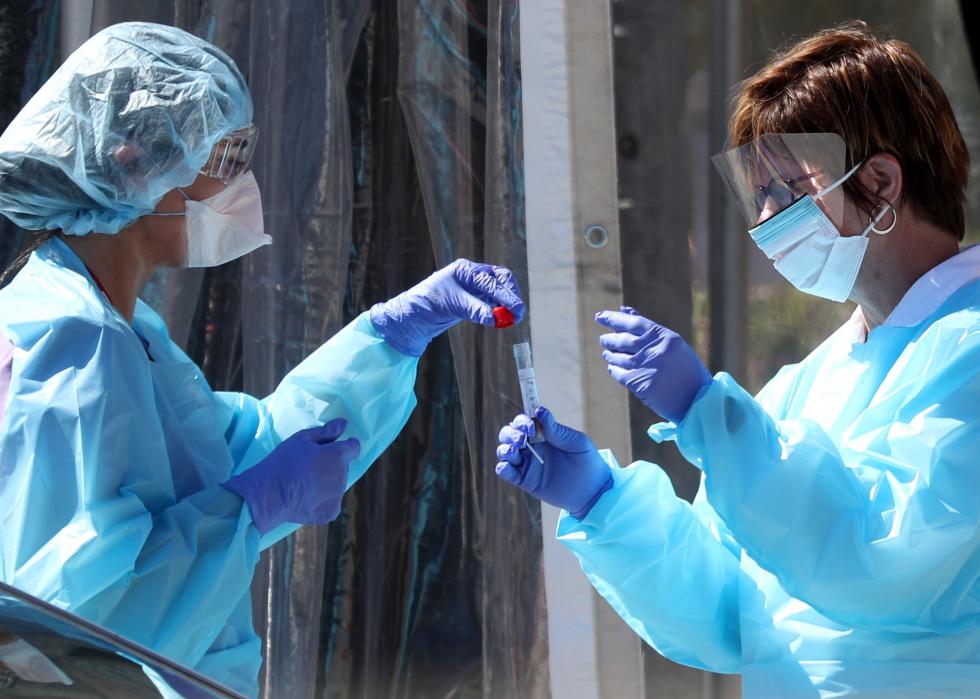
California
State COVID-19 statistics as of Dec. 13:
- 1.6 million total cases (3,964 per 100,000 population)
- 20,969 total deaths (54 per 100K)
Demographic breakdown:
- White: 941 cases per 100K, 27 deaths per 100K
--- 60.1% of state population, 14.3% of cases, 30.6% of deaths
- Black: 2,007 cases per 100K, 66 deaths per 100K
--- 5.8% of state population, 2.9% of cases, 7.1% of deaths
- Hispanic or Latino: 4,227 cases per 100K, 65 deaths per 100K
--- 38.9% of state population, 41.5% of cases, 47.3% of deaths
- Asian: 1,194 cases per 100K, 43 deaths per 100K
--- 14.3% of state population, 4.3% of cases, 11.5% of deaths
- Native American or Alaska Native: 1,154 cases per 100K, 22 deaths per 100K
--- 0.8% of state population, 0.2% of cases, 0.3% of deaths
- Native Hawaiian or Pacific Islander: 3,957 cases per 100K, 66 deaths per 100K
--- 0.4% of state population, 0.4% of cases, 0.5% of deaths
- Unknown: 27.7% of cases, 1.0% of deaths
According to the California Latino Economic Institute, almost 12% of Latinos in the state lack health insurance, and many work multiple jobs, so COVID-19 has been particularly devastating for the Hispanic and Latino population. At the beginning of October, the state enacted a health equity requirement that would require California's 35 largest counties to reduce novel coronavirus test positivity rates in vulnerable communities, which are mostly Black and Latino. The counties would also have to increase testing, contact tracing, and education efforts.

Colorado
State COVID-19 statistics as of Dec. 13:
- 288,193 total cases (5,210 per 100,000 population)
- 3,958 total deaths (72 per 100K)
Demographic breakdown:
- White: 2,308 cases per 100K, 52 deaths per 100K
--- 84.2% of state population, 37.3% of cases, 61.7% of deaths
- Black: 3,414 cases per 100K, 69 deaths per 100K
--- 4.1% of state population, 2.7% of cases, 4.0% of deaths
- Hispanic or Latino: 7,210 cases per 100K, 73 deaths per 100K
--- 21.4% of state population, 29.6% of cases, 21.8% of deaths
- Asian: 2,153 cases per 100K, 56 deaths per 100K
--- 3.1% of state population, 1.3% of cases, 2.4% of deaths
- Native American or Alaska Native: 2,856 cases per 100K, 35 deaths per 100K
--- 1.0% of state population, 0.5% of cases, 0.5% of deaths
- Native Hawaiian or Pacific Islander: 10,427 cases per 100K, 96 deaths per 100K
--- 0.1% of state population, 0.3% of cases, 0.2% of deaths
- Unknown: 26.2% of cases, 6.4% of deaths
In March 2020, the Latin Community Foundation of Colorado launched Ayuda Colorado, an initiative designed to support nonprofit organizations that serve the Latino population. And on Dec. 2, the Colorado state legislature passed Senate Bill 1, a $57 million relief package that includes $4 million set aside for minority-owned businesses.
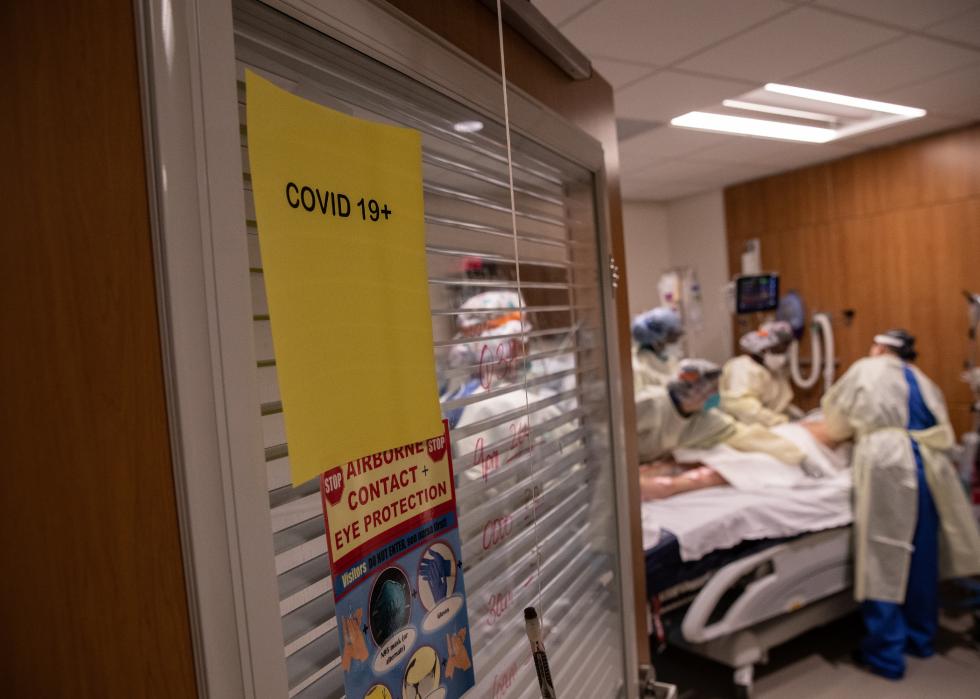
Connecticut
State COVID-19 statistics as of Dec. 13:
- 146,761 total cases (4,098 per 100,000 population)
- 5,363 total deaths (150 per 100K)
Demographic breakdown:
- White: 1,652 cases per 100K, 144 deaths per 100K
--- 76.4% of state population, 30.8% of cases, 73.3% of deaths
- Black: 3,203 cases per 100K, 196 deaths per 100K
--- 10.6% of state population, 8.3% of cases, 13.8% of deaths
- Hispanic or Latino: 4,544 cases per 100K, 89 deaths per 100K
--- 15.7% of state population, 17.4% of cases, 9.3% of deaths
- Asian: 1,020 cases per 100K, 37 deaths per 100K
--- 4.4% of state population, 1.1% of cases, 1.1% of deaths
- Native American or Alaska Native: 2,433 cases per 100K, 21 deaths per 100K
--- 0.3% of state population, 0.2% of cases, 0.0% of deaths
- Unknown: 36.5% of cases, 1.1% of deaths
On Nov. 6, James Michel, CEO of Access Health CT, the state’s health insurance marketplace, told the Hartford Courant that Blacks and Latinos are the hardest groups to reach when engaging with potential clients. Michel, who is Black, attributed these difficulties to a mistrust of the health care system among people in these communities. But reaching people of color who may lack health insurance is particularly important during COVID-19. To address issues of mistrust, Access Health CT analyzed census data to identify local organizations and churches that can encourage members to choose a health plan during open enrollment, which lasts until Dec. 15.

Delaware
State COVID-19 statistics as of Dec. 13:
- 45,460 total cases (4,788 per 100,000 population)
- 816 total deaths (86 per 100K)
Demographic breakdown:
- White: 3,052 cases per 100K, 83 deaths per 100K
--- 69.0% of state population, 44.0% of cases, 66.8% of deaths
- Black: 5,249 cases per 100K, 97 deaths per 100K
--- 22.1% of state population, 24.2% of cases, 24.9% of deaths
- Hispanic or Latino: 9,775 cases per 100K, 61 deaths per 100K
--- 9.1% of state population, 18.6% of cases, 6.5% of deaths
- Asian: 2,255 cases per 100K, 5 deaths per 100K
--- 3.9% of state population, 1.8% of cases, 0.2% of deaths
- Unknown: 5.6% of cases, 0.1% of deaths
On Dec. 8, Delaware’s department of health and social services provided emergency financial assistance to eligible households in response to the continuing increase in COVID-19 cases in the state, particularly among people of color. Emergency financial assistance, particularly through the state’s SNAP program, has been provided to eligible recipients since the end of March.
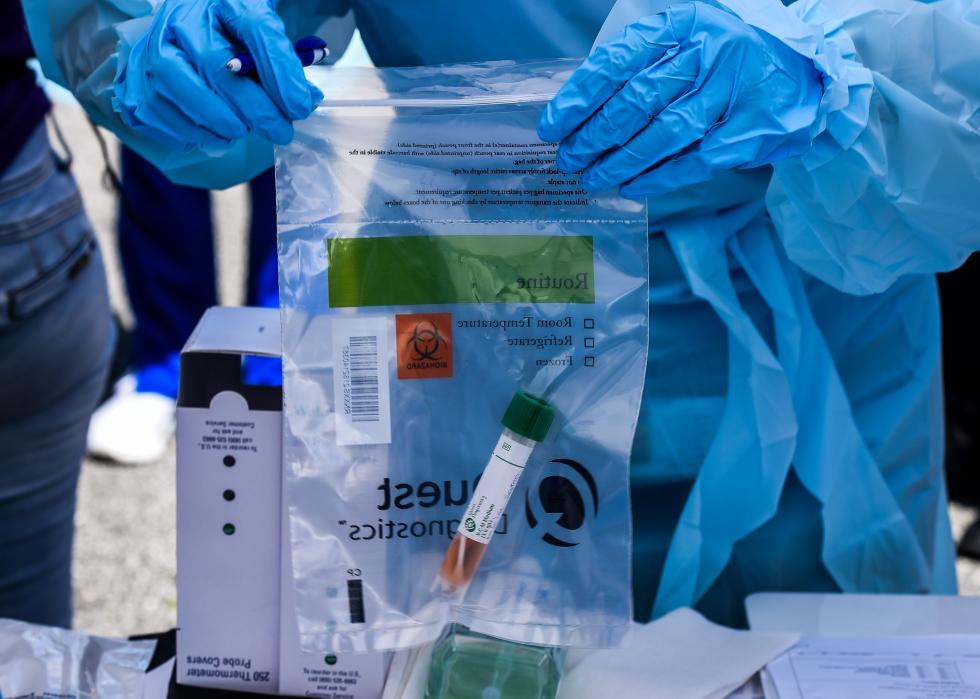
Florida
State COVID-19 statistics as of Dec. 13:
- 1.1 million total cases (5,466 per 100,000 population)
- 20,133 total deaths (98 per 100K)
Demographic breakdown:
- White: 2,226 cases per 100K, 66 deaths per 100K
--- 75.4% of state population, 30.7% of cases, 50.7% of deaths
- Black: 4,313 cases per 100K, 103 deaths per 100K
--- 16.1% of state population, 12.7% of cases, 17.0% of deaths
- Hispanic or Latino: 6,622 cases per 100K, 94 deaths per 100K
--- 25.2% of state population, 30.5% of cases, 24.3% of deaths
- Unknown: 19.5% of cases, 3.9% of deaths
Black Floridians have about twice the number of COVID-19 cases and deaths from COVID-19 per 100,000 people than white residents. And Hispanics and Latinos have about three times the number of COVID-19 cases per 100,000 people compared to whites. A researcher at Florida International University is conducting a study to identify factors keeping low-income people of color from getting tested for the coronavirus, and ways to overcome these barriers.
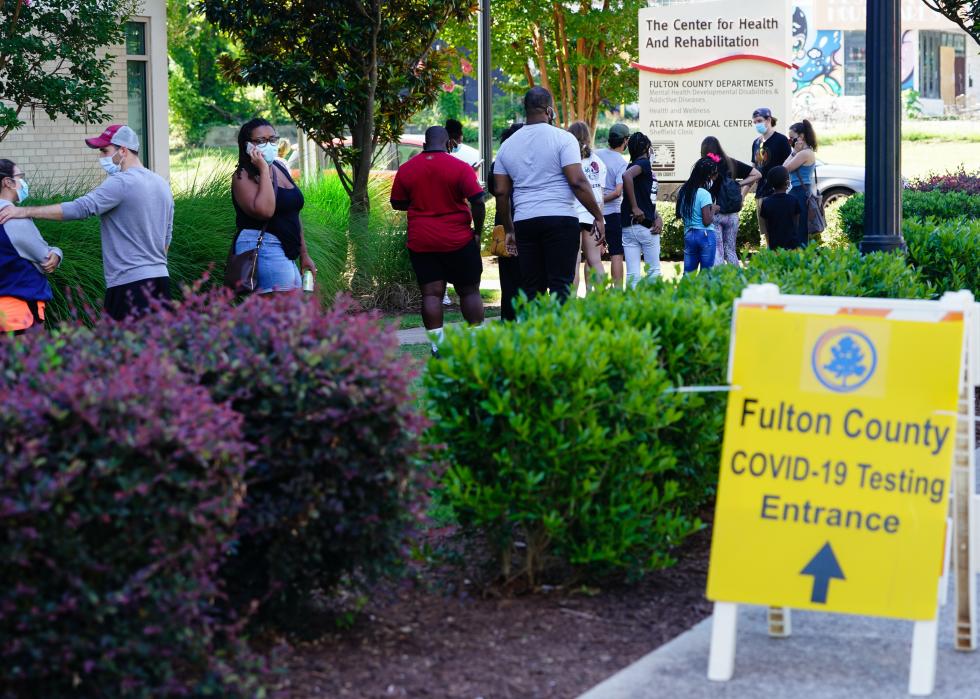
Georgia
State COVID-19 statistics as of Dec. 13:
- 476,044 total cases (4,623 per 100,000 population)
- 10,076 total deaths (98 per 100K)
Demographic breakdown:
- White: 2,948 cases per 100K, 80 deaths per 100K
--- 59.0% of state population, 37.7% of cases, 48.3% of deaths
- Black: 4,003 cases per 100K, 109 deaths per 100K
--- 31.5% of state population, 27.2% of cases, 35.1% of deaths
- Hispanic or Latino: 5,928 cases per 100K, 57 deaths per 100K
--- 9.4% of state population, 12.1% of cases, 5.5% of deaths
- Asian: 2,301 cases per 100K, 41 deaths per 100K
--- 3.9% of state population, 1.9% of cases, 1.6% of deaths
- Native American or Alaska Native: 893 cases per 100K, 30 deaths per 100K
--- 0.3% of state population, 0.1% of cases, 0.1% of deaths
- Native Hawaiian or Pacific Islander: 7,416 cases per 100K, 115 deaths per 100K
--- 0.1% of state population, 0.1% of cases, 0.1% of deaths
- Unknown: 18.4% of cases, 9.1% of deaths
The Urban League of Greater Atlanta continues to provide virtual educational assistance and financial counseling to help Black residents of Atlanta during COVID-19. And the Hispanic Alliance of Georgia is providing food and financial assistance to Latino families affected by unemployment or illness due to COVID-19.
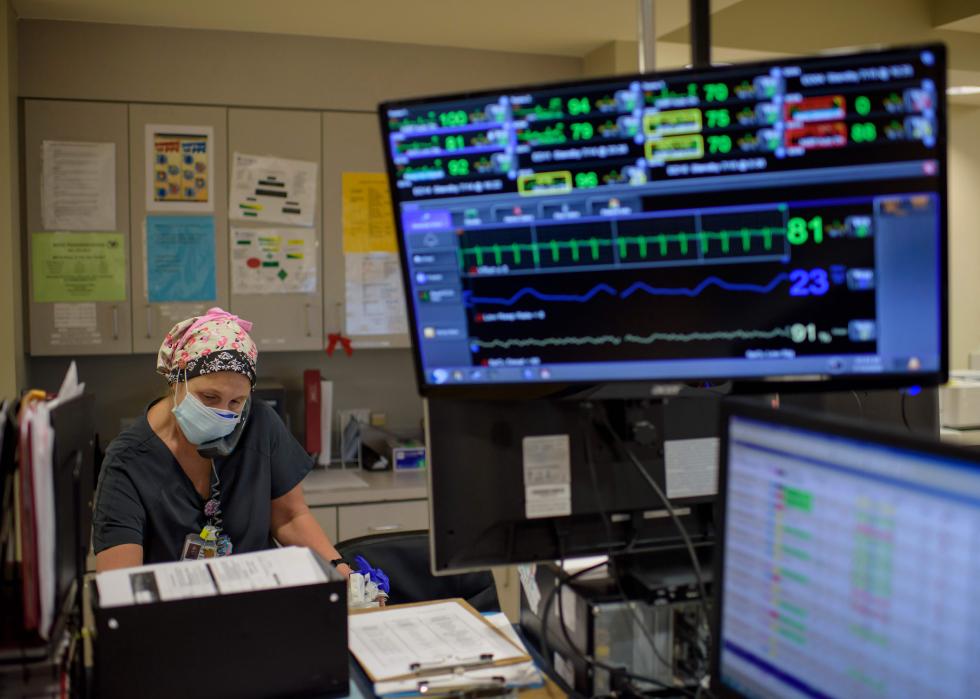
Hawaii
State COVID-19 statistics as of Dec. 13:
- 19,235 total cases (1,353 per 100,000 population)
- 274 total deaths (19 per 100K)
Demographic breakdown:
- White: 535 cases per 100K, 7 deaths per 100K
--- 25.0% of state population, 9.9% of cases, 8.8% of deaths
- Black: 1,150 cases per 100K, 19 deaths per 100K
--- 1.8% of state population, 1.6% of cases, 1.8% of deaths
- Asian: 784 cases per 100K, 27 deaths per 100K
--- 37.8% of state population, 21.9% of cases, 53.3% of deaths
- Native Hawaiian or Pacific Islander: 3,878 cases per 100K, 53 deaths per 100K
--- 10.1% of state population, 28.9% of cases, 27.7% of deaths
- Unknown: 35.1% of cases, 6.6% of deaths
On Nov. 18, the University of Hawaii at Manoa said it expects to receive a nearly $1 million federal grant to encourage more COVID-19 testing among Native Hawaiians and Pacific Islanders living on Hawaii and Guam. This grant will fund the Puipuia le Ola project to increase outreach to these communities, who have been significantly impacted by COVID-19.
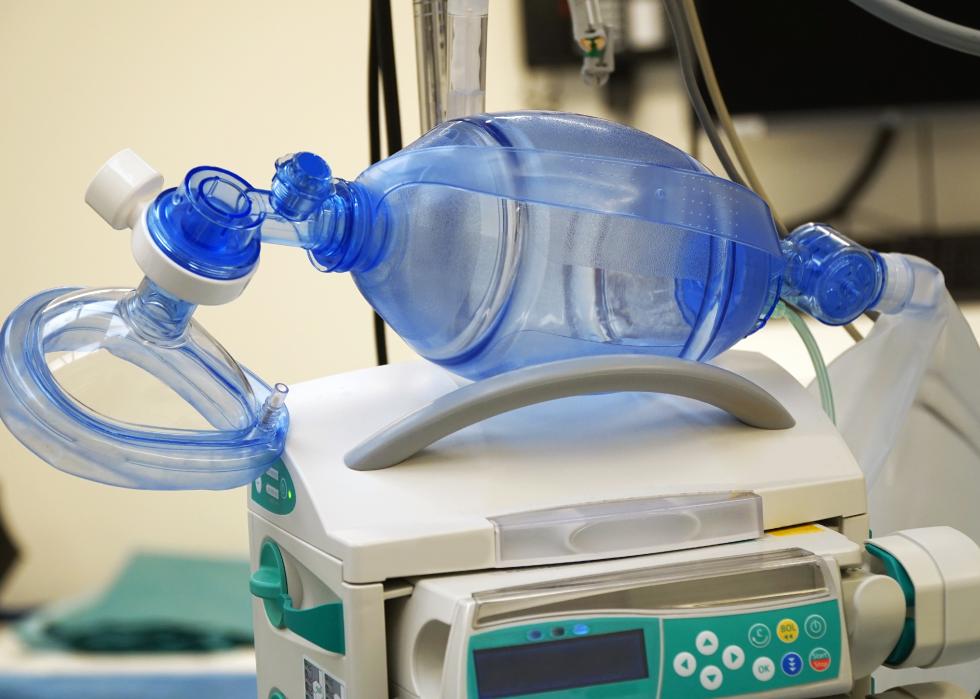
Idaho
State COVID-19 statistics as of Dec. 13:
- 121,179 total cases (7,180 per 100,000 population)
- 1,175 total deaths (70 per 100K)
Demographic breakdown:
- White: 4,219 cases per 100K, 71 deaths per 100K
--- 90.5% of state population, 53.2% of cases, 92.8% of deaths
- Black: 6,241 cases per 100K, 69 deaths per 100K
--- 0.7% of state population, 0.6% of cases, 0.7% of deaths
- Hispanic or Latino: 6,352 cases per 100K, 58 deaths per 100K
--- 12.4% of state population, 11.0% of cases, 10.3% of deaths
- Asian: 3,224 cases per 100K, 38 deaths per 100K
--- 1.4% of state population, 0.6% of cases, 0.8% of deaths
- Native American or Alaska Native: 6,828 cases per 100K, 88 deaths per 100K
--- 1.4% of state population, 1.3% of cases, 1.7% of deaths
- Native Hawaiian or Pacific Islander: 9,526 cases per 100K, deaths per 100K
--- 0.2% of state population, 0.2% of cases, 0.0% of deaths
- Unknown: 36.1% of cases, 2.6% of deaths
In August, the Idaho Statesman began tracking and mapping COVID-19 outbreaks at food and meat processing plants across the state, many of which employ Hispanics or Latinos. Data on the map include probable and confirmed COVID-19 cases at each facility, and are provided and verified by regional health districts.
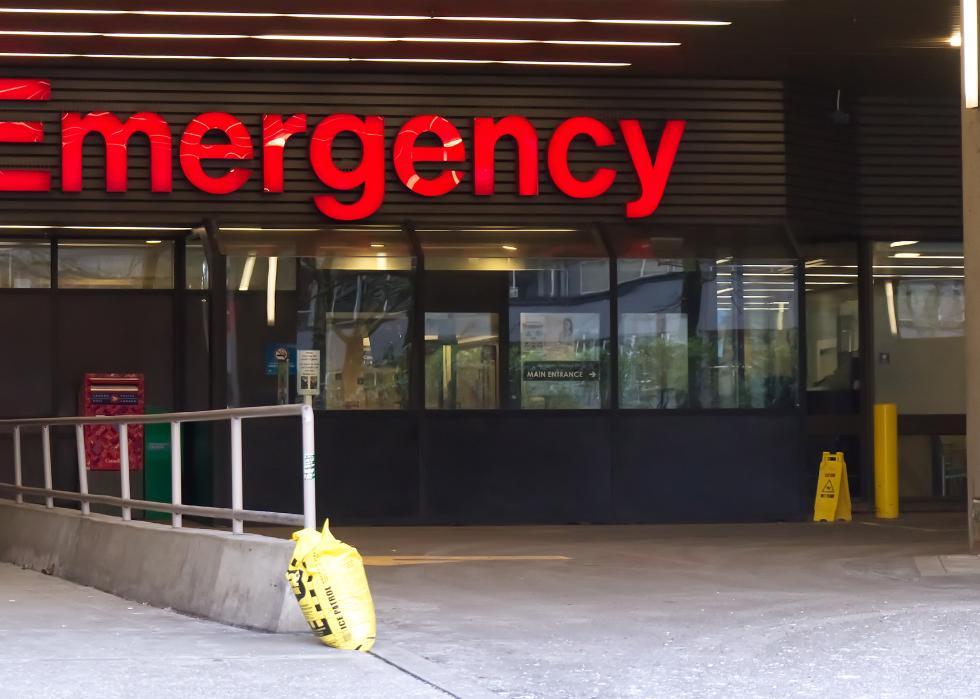
Illinois
State COVID-19 statistics as of Dec. 13:
- 848,904 total cases (6,621 per 100,000 population)
- 15,339 total deaths (120 per 100K)
Demographic breakdown:
- White: 3,145 cases per 100K, 87 deaths per 100K
--- 71.7% of state population, 34.0% of cases, 52.3% of deaths
- Black: 4,277 cases per 100K, 154 deaths per 100K
--- 14.2% of state population, 9.2% of cases, 18.4% of deaths
- Hispanic or Latino: 7,298 cases per 100K, 110 deaths per 100K
--- 17.0% of state population, 18.7% of cases, 15.6% of deaths
- Asian: 2,430 cases per 100K, 73 deaths per 100K
--- 5.4% of state population, 2.0% of cases, 3.3% of deaths
- Native American or Alaska Native: 3,151 cases per 100K, 56 deaths per 100K
--- 0.2% of state population, 0.1% of cases, 0.1% of deaths
- Native Hawaiian or Pacific Islander: 17,481 cases per 100K, 284 deaths per 100K
--- 0.0% of state population, 0.1% of cases, 0.1% of deaths
- Unknown: 32.4% of cases, 9.7% of deaths
The state has convened a COVID-19 Health Equity Task Force to address these disparities between communities of color and white communities and provide help to disproportionately affected populations. And Chicago Mayor Lori Lightfoot created the Racial Equity Rapid Response Team that will implement strategies to slow the spread of the novel coronavirus among the city’s Black and Latino or Hispanic communities.
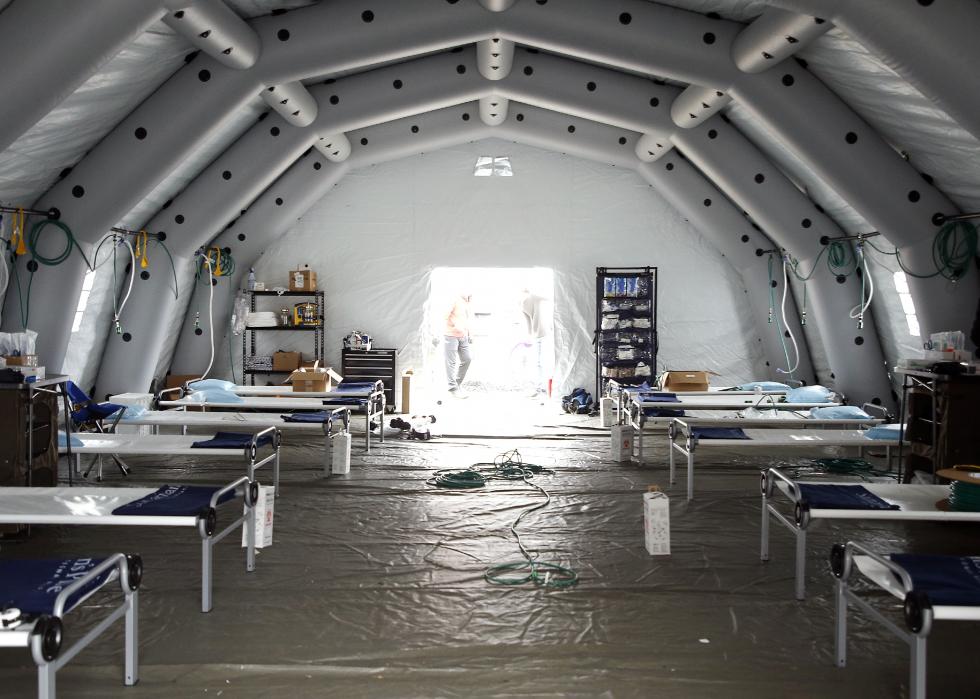
Indiana
State COVID-19 statistics as of Dec. 13:
- 425,434 total cases (6,410 per 100,000 population)
- 6,805 total deaths (103 per 100K)
Demographic breakdown:
- White: 4,908 cases per 100K, 83 deaths per 100K
--- 83.6% of state population, 64.0% of cases, 67.3% of deaths
- Black: 4,578 cases per 100K, 97 deaths per 100K
--- 9.3% of state population, 6.7% of cases, 8.8% of deaths
- Hispanic or Latino: 6,178 cases per 100K, 34 deaths per 100K
--- 6.8% of state population, 6.5% of cases, 2.2% of deaths
- Asian: 3,758 cases per 100K, 24 deaths per 100K
--- 2.2% of state population, 1.3% of cases, 0.5% of deaths
- Unknown: 16.8% of cases, 10.6% of deaths
The Indiana Black Legislative Caucus convened the Indiana Health Disparities Task Force to develop a plan to close gaps in the COVID-19 response in Black and Hispanic or Latino communities. In October, the task force advised state leaders to increase testing and contact tracing in these communities. The task force also recommended expanding insurance eligibility and implementing community-based public education initiatives.
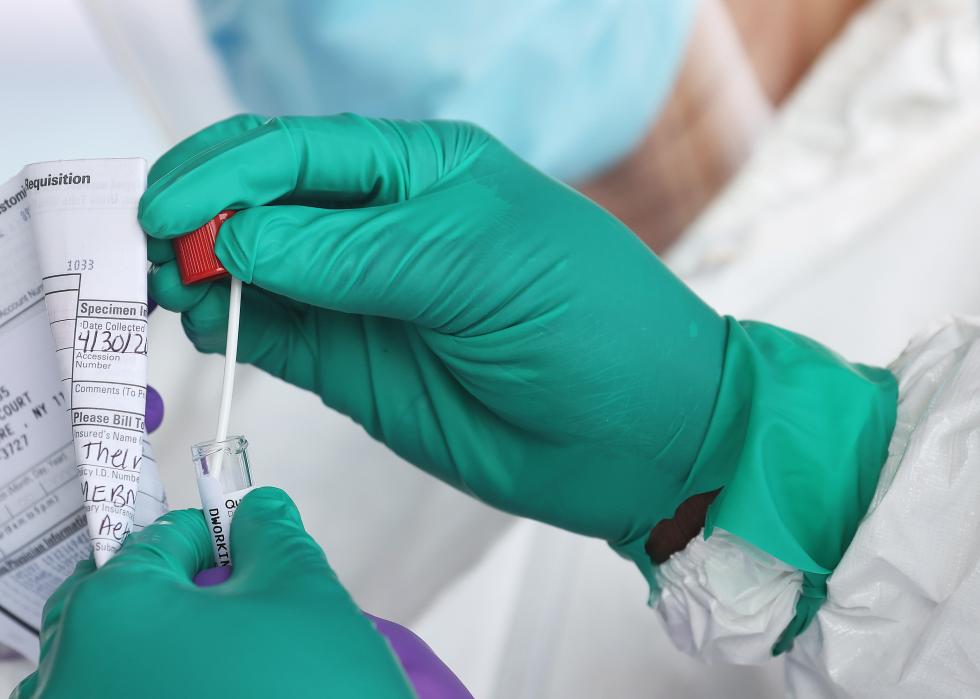
Iowa
State COVID-19 statistics as of Dec. 13:
- 258,086 total cases (8,239 per 100,000 population)
- 3,213 total deaths (103 per 100K)
Demographic breakdown:
- White: 5,621 cases per 100K, 104 deaths per 100K
--- 90.3% of state population, 61.6% of cases, 91.8% of deaths
- Black: 6,997 cases per 100K, 75 deaths per 100K
--- 3.5% of state population, 3.0% of cases, 2.6% of deaths
- Hispanic or Latino: 9,791 cases per 100K, 52 deaths per 100K
--- 5.9% of state population, 7.0% of cases, 3.0% of deaths
- Asian: 6,828 cases per 100K, 60 deaths per 100K
--- 2.4% of state population, 2.0% of cases, 1.4% of deaths
- Native American or Alaska Native: 7,689 cases per 100K, 95 deaths per 100K
--- 0.4% of state population, 0.3% of cases, 0.3% of deaths
- Native Hawaiian or Pacific Islander: 26,334 cases per 100K, 479 deaths per 100K
--- 0.1% of state population, 0.3% of cases, 0.5% of deaths
- Unknown: 31.8% of cases, 2.4% of deaths
Iowa is the largest pork-producing state in the country, and is home to about 12 large meat processing plants. The coronavirus outbreaks at these facilities sickened hundreds of workers, many of whom were people of color. However, the Iowa Department of Public Health declined to provide the U.S. Centers for Disease Control and Prevention with data for its recent report about COVID-19 among workers at meat processing plants in the United States. According to the report, 87% of those infected at meat processing plants in 21 other states are people of color.

Kansas
State COVID-19 statistics as of Dec. 13:
- 185,294 total cases (6,370 per 100,000 population)
- 2,072 total deaths (71 per 100K)
Demographic breakdown:
- White: 5,117 cases per 100K, 65 deaths per 100K
--- 84.6% of state population, 67.9% of cases, 77.0% of deaths
- Black: 5,534 cases per 100K, 80 deaths per 100K
--- 5.8% of state population, 5.1% of cases, 6.5% of deaths
- Hispanic or Latino: 8,333 cases per 100K, 50 deaths per 100K
--- 11.7% of state population, 15.3% of cases, 8.3% of deaths
- Asian: 3,880 cases per 100K, 34 deaths per 100K
--- 2.9% of state population, 1.7% of cases, 1.4% of deaths
- Native American or Alaska Native: 5,306 cases per 100K, 79 deaths per 100K
--- 0.8% of state population, 0.7% of cases, 0.9% of deaths
- Unknown: 18.7% of cases, 7.5% of deaths
On Oct. 7, the University of Kansas Medical Center announced it received a $3.5 million grant from the NIH RADx-UP program to implement COVID-19 testing in underserved populations, which are primarily communities of color. The grant will help establish local Health Equity Action Teams in six rural and four urban counties in the state. These community-led teams will work with local health departments to identify and address COVID-related disparities in at-risk communities, starting with increasing access to testing.
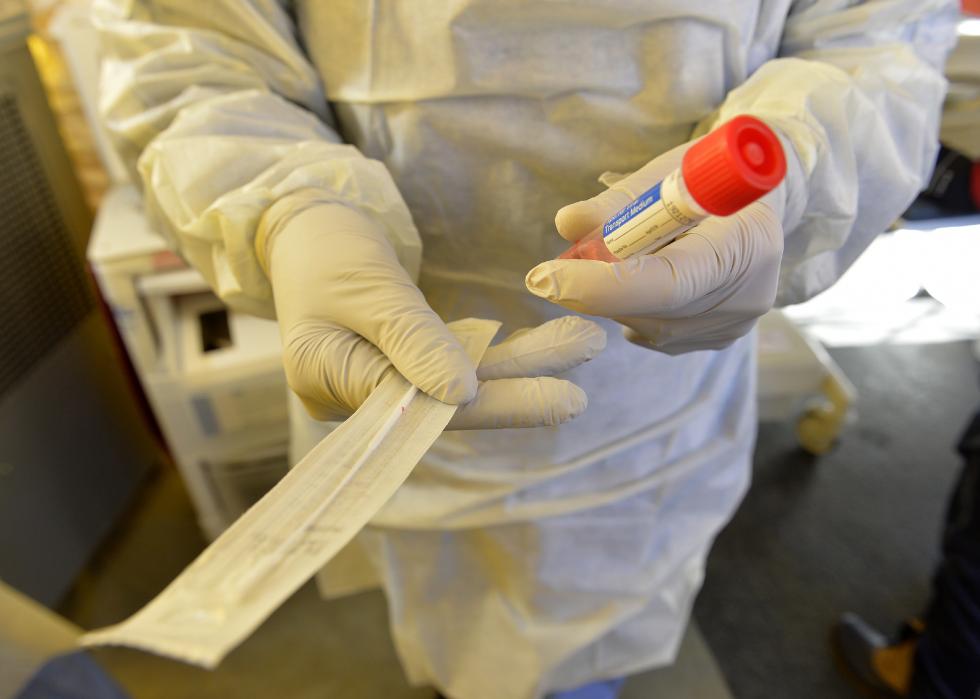
Kentucky
State COVID-19 statistics as of Dec. 13:
- 223,104 total cases (5,025 per 100,000 population)
- 2,207 total deaths (50 per 100K)
Demographic breakdown:
- White: 3,647 cases per 100K, 46 deaths per 100K
--- 87.1% of state population, 63.2% of cases, 79.9% of deaths
- Black: 4,547 cases per 100K, 58 deaths per 100K
--- 8.0% of state population, 7.2% of cases, 9.4% of deaths
- Hispanic or Latino: 6,223 cases per 100K, 31 deaths per 100K
--- 3.6% of state population, 4.4% of cases, 2.3% of deaths
- Asian: 3,406 cases per 100K, 27 deaths per 100K
--- 1.4% of state population, 1.0% of cases, 0.8% of deaths
- Native American or Alaska Native: 4,430 cases per 100K, 10 deaths per 100K
--- 0.2% of state population, 0.2% of cases, 0.0% of deaths
- Native Hawaiian or Pacific Islander: 5,970 cases per 100K, deaths per 100K
--- 0.1% of state population, 0.1% of cases, 0.0% of deaths
- Unknown: 24.5% of cases, 7.5% of deaths
In August, Kentucky Gov. Andy Beshear announced an initiative called “1-2-3, No Cost to Me,” a campaign to enroll more eligible residents in Medicaid to ensure they have health coverage during the pandemic. The goal of the campaign is to eliminate health disparities between whites and people of color that have become more evident since the pandemic began.
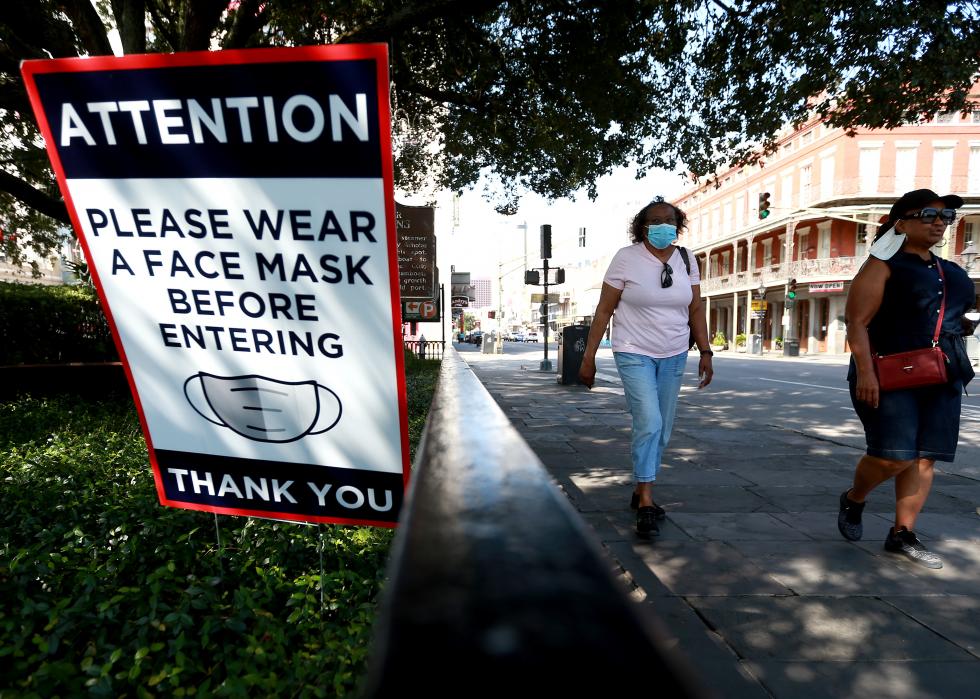
Louisiana
State COVID-19 statistics as of Dec. 13:
- 268,613 total cases (5,760 per 100,000 population)
- 6,818 total deaths (146 per 100K)
Demographic breakdown:
- White: 3,924 cases per 100K, 128 deaths per 100K
--- 62.2% of state population, 42.4% of cases, 54.5% of deaths
- Black: 5,606 cases per 100K, 189 deaths per 100K
--- 32.2% of state population, 31.4% of cases, 41.7% of deaths
- Asian: 16,007 cases per 100K, 56 deaths per 100K
--- 1.7% of state population, 4.8% of cases, 0.7% of deaths
- Native American or Alaska Native: 2,824 cases per 100K, 27 deaths per 100K
--- 0.6% of state population, 0.3% of cases, 0.1% of deaths
- Native Hawaiian or Pacific Islander: 19,687 cases per 100K, 545 deaths per 100K
--- 0.0% of state population, 0.1% of cases, 0.1% of deaths
- Unknown: 13.3% of cases, 2.6% of deaths
On April 24, Louisiana Gov. John Bel Edwards announced the allocation of $500,000 from the Governor’s COVID-19 Response Fund to create the Louisiana COVID-19 Health Equity Task Force. According to Dr. Corey Hebert, a member of the task force, the force’s next job is to gain the trust of the Black and Latino communities so they will be willing to take the vaccine. Hebert said the task force must work with city councils, Black and Latino churches, and other local organizations to accomplish this goal.
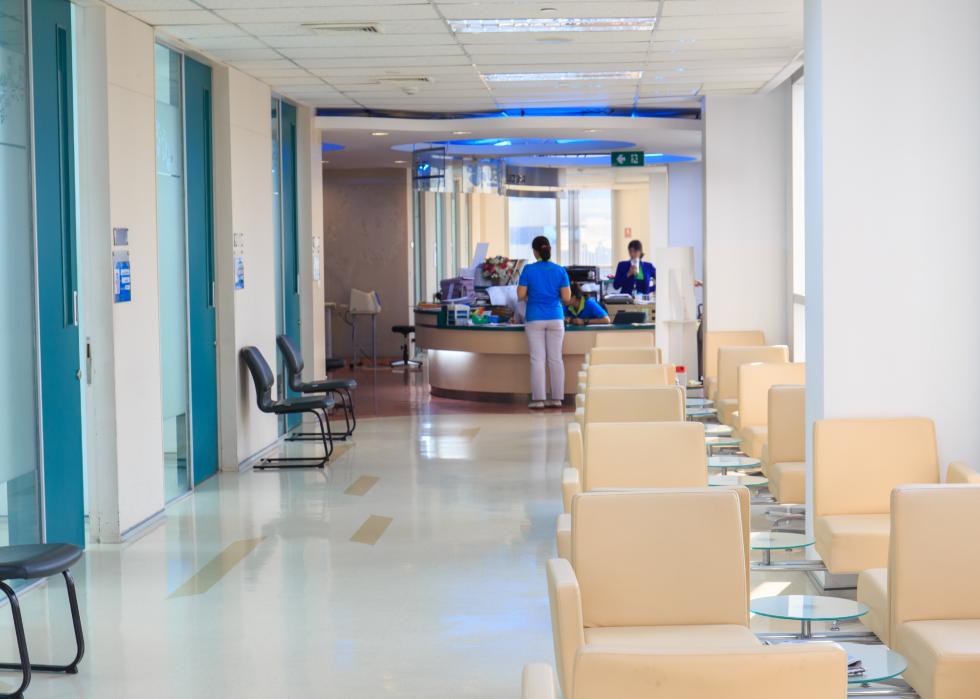
Maine
State COVID-19 statistics as of Dec. 13:
- 15,923 total cases (1,195 per 100,000 population)
- 257 total deaths (19 per 100K)
Demographic breakdown:
- White: 981 cases per 100K, 16 deaths per 100K
--- 94.5% of state population, 77.6% of cases, 76.3% of deaths
- Black: 7,505 cases per 100K, 28 deaths per 100K
--- 1.3% of state population, 8.4% of cases, 1.9% of deaths
- Hispanic or Latino: 1,667 cases per 100K, 5 deaths per 100K
--- 1.6% of state population, 2.2% of cases, 0.4% of deaths
- Asian: 1,528 cases per 100K, deaths per 100K
--- 1.1% of state population, 1.4% of cases, 0.0% of deaths
- Native American or Alaska Native: 590 cases per 100K, deaths per 100K
--- 0.6% of state population, 0.3% of cases, 0.0% of deaths
- Native Hawaiian or Pacific Islander: 3,145 cases per 100K, deaths per 100K
--- 0.0% of state population, 0.1% of cases, 0.0% of deaths
- Unknown: 9.2% of cases, 20.2% of deaths
Maine Initiatives, a foundation that provides grants to nonprofits that advocate for social and environmental causes, had made rapid-response grants through its COVID-19 Community Care Fund. This fund gives grants to grassroots organizations that support those most affected by COVID-19, including communities of color.
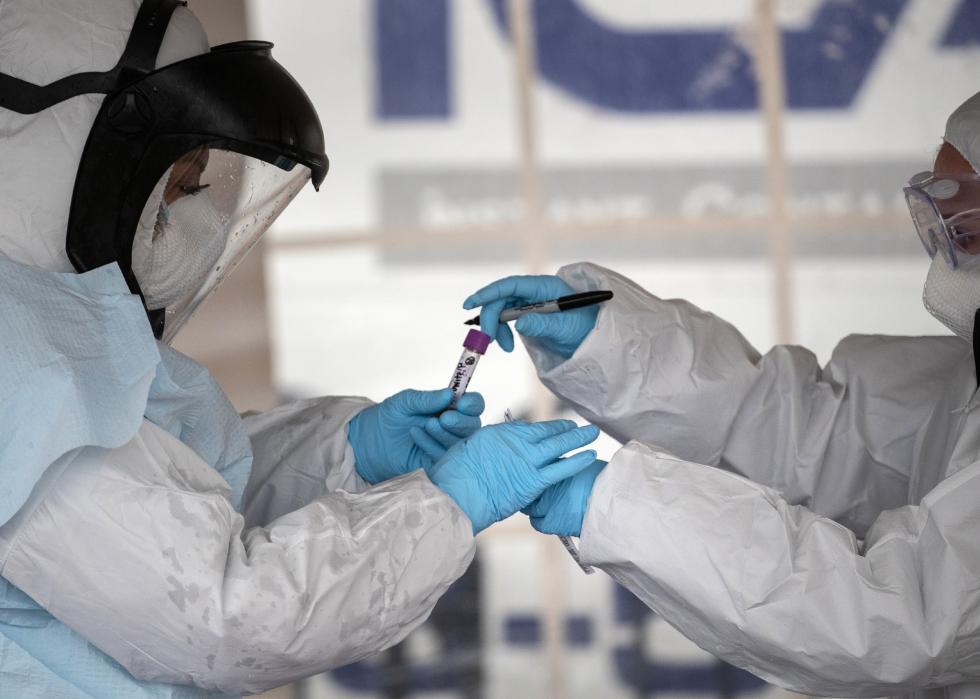
Maryland
State COVID-19 statistics as of Dec. 13:
- 234,647 total cases (3,909 per 100,000 population)
- 5,117 total deaths (85 per 100K)
Demographic breakdown:
- White: 2,178 cases per 100K, 70 deaths per 100K
--- 56.2% of state population, 31.3% of cases, 46.3% of deaths
- Black: 3,867 cases per 100K, 109 deaths per 100K
--- 29.8% of state population, 29.5% of cases, 38.0% of deaths
- Hispanic or Latino: 7,242 cases per 100K, 89 deaths per 100K
--- 9.8% of state population, 18.2% of cases, 10.2% of deaths
- Asian: 1,264 cases per 100K, 47 deaths per 100K
--- 6.2% of state population, 2.0% of cases, 3.5% of deaths
- Unknown: 14.5% of cases, 0.9% of deaths
In late October, Freeman A. Hrabowski III, president of the University of Maryland Baltimore County, announced he and his wife, Jacqueline, would participate in a clinical trial for a COVID-19 vaccine. The phase 3 trial is being run by the University of Maryland School of Medicine. The couple is Black, and hope their participation will encourage other people of color to trust doctors and scientists and participate in a trial themselves.

Massachusetts
State COVID-19 statistics as of Dec. 13:
- 290,578 total cases (4,254 per 100,000 population)
- 11,349 total deaths (166 per 100K)
Demographic breakdown:
- White: 1,645 cases per 100K, 157 deaths per 100K
--- 78.5% of state population, 30.3% of cases, 74.0% of deaths
- Black: 3,700 cases per 100K, 164 deaths per 100K
--- 7.5% of state population, 6.5% of cases, 7.4% of deaths
- Hispanic or Latino: 7,869 cases per 100K, 100 deaths per 100K
--- 11.6% of state population, 21.4% of cases, 7.0% of deaths
- Asian: 1,476 cases per 100K, 64 deaths per 100K
--- 6.5% of state population, 2.2% of cases, 2.5% of deaths
- Unknown: 32.8% of cases, 2.1% of deaths
On Dec. 11, The Boston Foundation announced $1.5 million in grants from its COVID-19 Response Fund would be awarded to 10 organizations serving Black, Latino, and other communities of color. They said an additional $450,000 would go toward addressing housing and community needs, and helping arts organizations that have been affected by COVID-19.
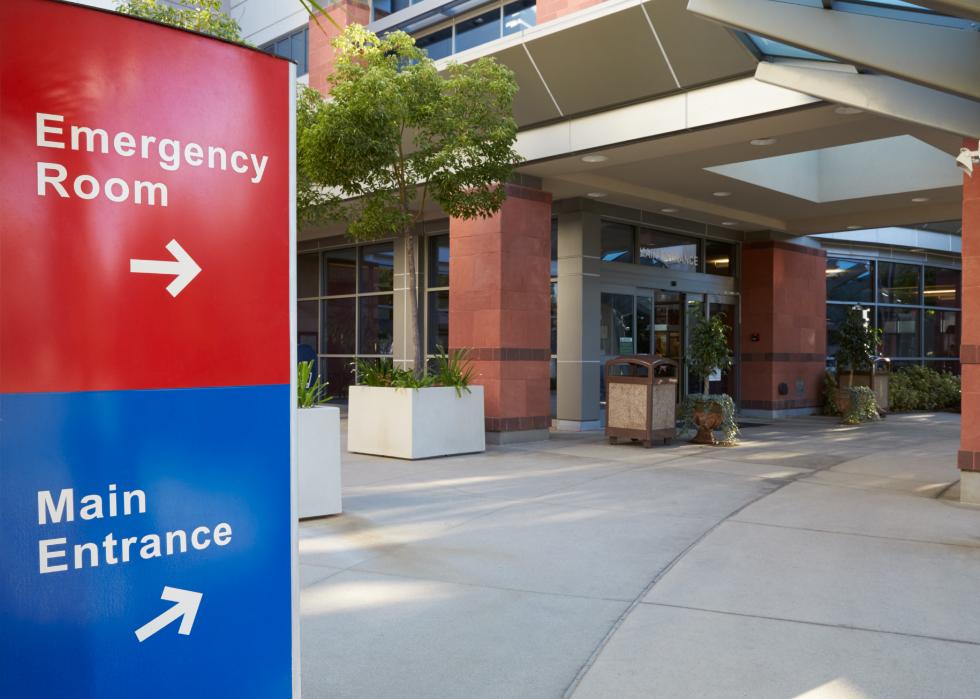
Michigan
State COVID-19 statistics as of Dec. 13:
- 465,159 total cases (4,671 per 100,000 population)
- 11,195 total deaths (112 per 100K)
Demographic breakdown:
- White: 3,282 cases per 100K, 89 deaths per 100K
--- 78.5% of state population, 55.2% of cases, 62.3% of deaths
- Black: 3,775 cases per 100K, 219 deaths per 100K
--- 13.8% of state population, 11.2% of cases, 26.9% of deaths
- Hispanic or Latino: 4,854 cases per 100K, 59 deaths per 100K
--- 5.0% of state population, 5.2% of cases, 2.6% of deaths
- Asian: 2,211 cases per 100K, 39 deaths per 100K
--- 3.1% of state population, 1.4% of cases, 1.1% of deaths
- Native American or Alaska Native: 4,459 cases per 100K, 85 deaths per 100K
--- 0.5% of state population, 0.5% of cases, 0.4% of deaths
- Unknown: 22.0% of cases, 5.3% of deaths
On Sept. 28, state officials in Michigan announced that progress had been made in reducing racial disparities in COVID-19 outcomes. And on Dec. 3, the Michigan COVID-19 Task Force on Racial Disparities released an interim report describing the progress the state has made in curbing the spread of the novel coronavirus in communities of color. According to the report, the task force will focus next on developing a mobile testing infrastructure that can also be used for vaccine distribution and increasing health insurance enrollment.
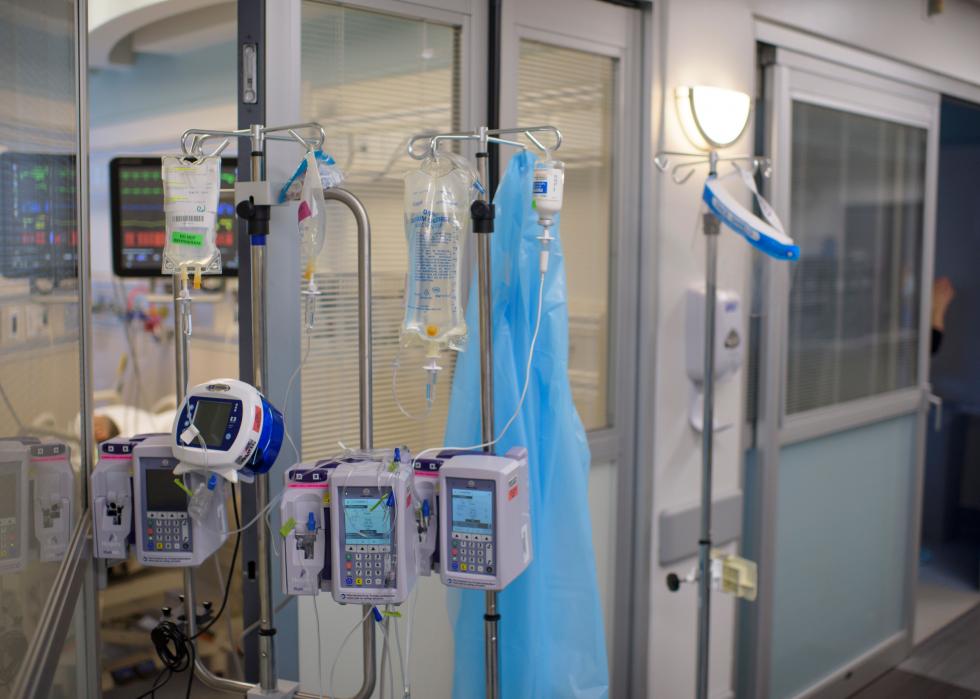
Minnesota
State COVID-19 statistics as of Dec. 13:
- 378,823 total cases (6,854 per 100,000 population)
- 4,444 total deaths (80 per 100K)
Demographic breakdown:
- White: 5,365 cases per 100K, 79 deaths per 100K
--- 83.3% of state population, 65.2% of cases, 81.8% of deaths
- Black: 9,047 cases per 100K, 73 deaths per 100K
--- 6.2% of state population, 8.2% of cases, 5.6% of deaths
- Hispanic or Latino: 11,603 cases per 100K, 52 deaths per 100K
--- 5.3% of state population, 9.0% of cases, 3.4% of deaths
- Asian: 5,965 cases per 100K, 63 deaths per 100K
--- 4.7% of state population, 4.1% of cases, 3.7% of deaths
- Native American or Alaska Native: 5,881 cases per 100K, 105 deaths per 100K
--- 1.1% of state population, 0.9% of cases, 1.4% of deaths
- Native Hawaiian or Pacific Islander: 18,290 cases per 100K, 137 deaths per 100K
--- 0.0% of state population, 0.1% of cases, 0.1% of deaths
- Unknown: 9.7% of cases, 2.5% of deaths
On Oct. 26, the African American Leadership Forum and the Phyllis Wheatley Community Center in Minneapolis launched the MN Black Community COVID-19 Hotline, a 24/7 service that helps clients cope with pandemic-related challenges. For example, the hotline provides information about locations of testing sites and resources for those facing unemployment and food insecurity.

Mississippi
State COVID-19 statistics as of Dec. 13:
- 177,947 total cases (5,954 per 100,000 population)
- 4,180 total deaths (140 per 100K)
Demographic breakdown:
- White: 4,430 cases per 100K, 119 deaths per 100K
--- 58.6% of state population, 43.6% of cases, 49.7% of deaths
- Black: 5,536 cases per 100K, 159 deaths per 100K
--- 37.7% of state population, 35.0% of cases, 42.7% of deaths
- Hispanic or Latino: 4,678 cases per 100K, 53 deaths per 100K
--- 3.0% of state population, 2.4% of cases, 1.1% of deaths
- Asian: 2,434 cases per 100K, 42 deaths per 100K
--- 0.9% of state population, 0.4% of cases, 0.3% of deaths
- Native American or Alaska Native: 11,286 cases per 100K, 672 deaths per 100K
--- 0.5% of state population, 0.9% of cases, 2.2% of deaths
- Unknown: 14.4% of cases, 3.0% of deaths
Black residents of Mississippi were initially much more affected by COVID-19 than white residents. But as the novel coronavirus surged in the fall, things began to change. According to CNN Health, Whites in Mississippi started to surpass Blacks in the COVID-19 death toll around Sept. 21. State health officer Dr. Thomas Dobbs told CNN Health one reason for this change was that members of the white community were not following social distancing and mask guidelines as closely as members of the Black community.

Missouri
State COVID-19 statistics as of Dec. 13:
- 345,041 total cases (5,666 per 100,000 population)
- 4,511 total deaths (74 per 100K)
Demographic breakdown:
- White: 3,193 cases per 100K, 48 deaths per 100K
--- 82.2% of state population, 46.3% of cases, 53.6% of deaths
- Black: 4,430 cases per 100K, 94 deaths per 100K
--- 11.6% of state population, 9.0% of cases, 14.8% of deaths
- Hispanic or Latino: 5,166 cases per 100K, 40 deaths per 100K
--- 4.1% of state population, 3.7% of cases, 2.2% of deaths
- Asian: 2,424 cases per 100K, 26 deaths per 100K
--- 1.9% of state population, 0.8% of cases, 0.7% of deaths
- Native American or Alaska Native: 2,304 cases per 100K, 30 deaths per 100K
--- 0.4% of state population, 0.2% of cases, 0.2% of deaths
- Native Hawaiian or Pacific Islander: 450 cases per 100K, deaths per 100K
--- 0.1% of state population, 0.0% of cases, 0.0% of deaths
- Unknown: 28.6% of cases, 7.6% of deaths
On Nov. 23, the University of Missouri-Kansas City was awarded a $1.9 million grant from the National Institutes of Health through the NIH RADx-UP program. Grant investigators will work with 16 Black churches in Kansas City in partnership with the Calvary Community Outreach Network and the Kansas City Health Department to provide contact tracing, testing, and other resources.
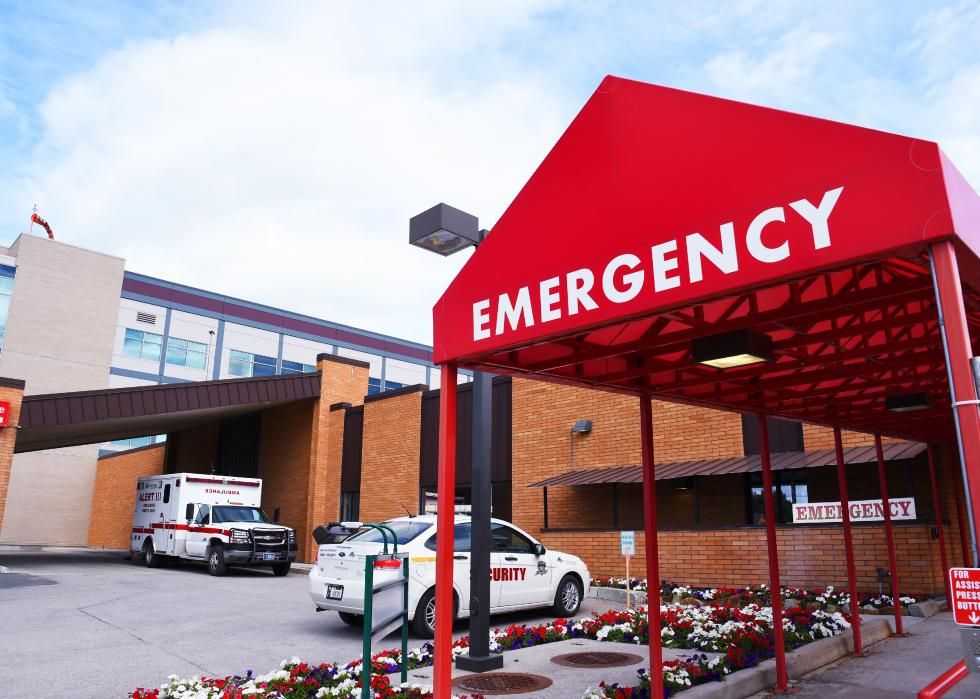
Montana
State COVID-19 statistics as of Dec. 13:
- 73,303 total cases (7,037 per 100,000 population)
- 818 total deaths (79 per 100K)
Demographic breakdown:
- White: 4,700 cases per 100K, 42 deaths per 100K
--- 88.9% of state population, 59.3% of cases, 47.9% of deaths
- Black: 7,171 cases per 100K, deaths per 100K
--- 0.4% of state population, 0.5% of cases, 0.0% of deaths
- Hispanic or Latino: 4,201 cases per 100K, deaths per 100K
--- 3.7% of state population, 2.2% of cases, 0.0% of deaths
- Asian: 2,907 cases per 100K, deaths per 100K
--- 0.8% of state population, 0.3% of cases, 0.0% of deaths
- Native American or Alaska Native: 9,966 cases per 100K, 230 deaths per 100K
--- 6.5% of state population, 9.1% of cases, 18.9% of deaths
- Unknown: 23.8% of cases, 100.0% of deaths
On Dec. 2, Montana State University’s Center for American Indian and Rural Health Equity was awarded a $1.8 million grant from the NIH RADx-UP program to study testing strategies in underserved, predominantly minority populations in Montana and Washington. MSU and the center will lead the study and look at testing strategies among Native American populations in Montana, using research partnerships with the Flathead Reservation.
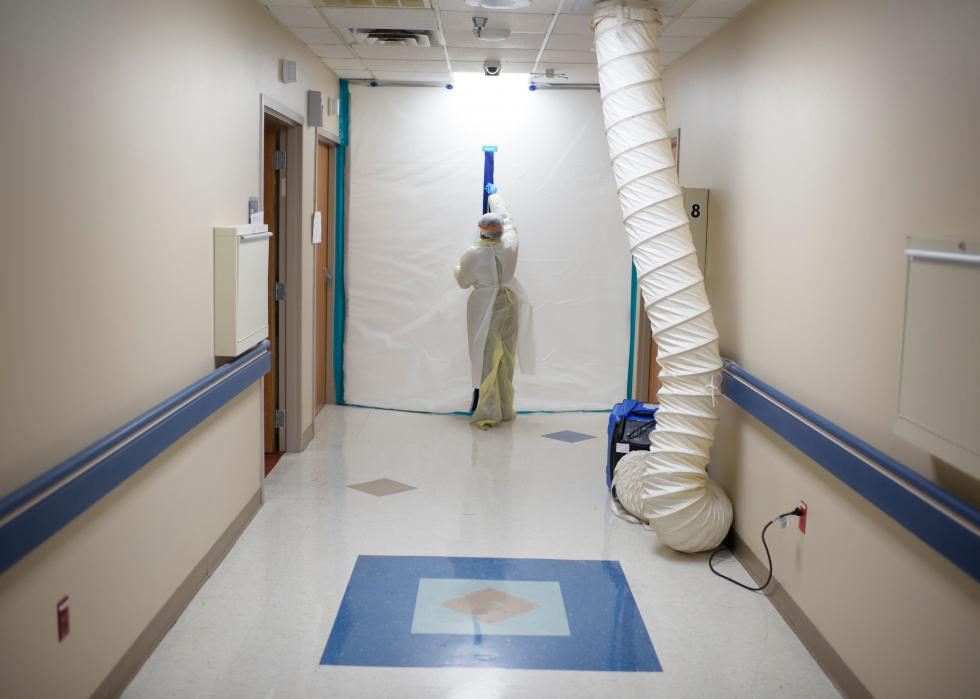
Nebraska
State COVID-19 statistics as of Dec. 13:
- 148,861 total cases (7,815 per 100,000 population)
- 1,373 total deaths (72 per 100K)
Demographic breakdown:
- White: 3,804 cases per 100K, 42 deaths per 100K
--- 87.5% of state population, 42.6% of cases, 51.0% of deaths
- Black: 3,810 cases per 100K, 53 deaths per 100K
--- 4.8% of state population, 2.3% of cases, 3.5% of deaths
- Hispanic or Latino: 8,587 cases per 100K, 58 deaths per 100K
--- 10.7% of state population, 11.7% of cases, 8.6% of deaths
- Asian: 4,471 cases per 100K, 43 deaths per 100K
--- 2.3% of state population, 1.3% of cases, 1.4% of deaths
- Native American or Alaska Native: 4,797 cases per 100K, 93 deaths per 100K
--- 0.9% of state population, 0.6% of cases, 1.2% of deaths
- Native Hawaiian or Pacific Islander: 10,560 cases per 100K, deaths per 100K
--- 0.1% of state population, 0.1% of cases, 0.0% of deaths
- Unknown: 51.3% of cases, 41.7% of deaths
Professor Arthur “Trey” Andrews of the University of Nebraska-Lincoln received a grant from the university’s Office of Research and Economic Development COVID-19 Rapid Response Grant Program to study how the pandemic is affecting Latinos in the state. Two hundred Latino meatpacking plant workers will participate in the study by filling out surveys every three months over the next year. Participants will answer questions about their attitudes toward COVID-19 prevention and treatment, as well as questions about their use of the health care system, their health status, and their mental health.

Nevada
State COVID-19 statistics as of Dec. 13:
- 186,833 total cases (6,392 per 100,000 population)
- 2,539 total deaths (87 per 100K)
Demographic breakdown:
- White: 2,496 cases per 100K, 58 deaths per 100K
--- 66.2% of state population, 25.9% of cases, 44.3% of deaths
- Black: 3,939 cases per 100K, 88 deaths per 100K
--- 8.9% of state population, 5.5% of cases, 9.1% of deaths
- Hispanic or Latino: 6,296 cases per 100K, 64 deaths per 100K
--- 28.5% of state population, 28.0% of cases, 21.0% of deaths
- Asian: 4,423 cases per 100K, 111 deaths per 100K
--- 8.0% of state population, 5.6% of cases, 10.3% of deaths
- Native American or Alaska Native: 2,109 cases per 100K, 53 deaths per 100K
--- 1.2% of state population, 0.4% of cases, 0.7% of deaths
- Unknown: 26.6% of cases, 14.3% of deaths
On June 30, local Las Vegas and Southern Nevada authorities launched the initiative Esta En Tus Manos ("It's in Your Hands"). The initiative includes a Spanish-language website to provide the Hispanic or Latino communities with resources such as COVID-19 testing locations.

New Hampshire
State COVID-19 statistics as of Dec. 13:
- 30,956 total cases (2,304 per 100,000 population)
- 603 total deaths (45 per 100K)
Demographic breakdown:
- White: 1,233 cases per 100K, 40 deaths per 100K
--- 93.0% of state population, 49.8% of cases, 83.4% of deaths
- Black: 2,769 cases per 100K, 44 deaths per 100K
--- 1.5% of state population, 1.8% of cases, 1.5% of deaths
- Hispanic or Latino: 3,977 cases per 100K, 35 deaths per 100K
--- 3.6% of state population, 6.2% of cases, 2.8% of deaths
- Asian: 1,257 cases per 100K, 11 deaths per 100K
--- 2.7% of state population, 1.5% of cases, 0.7% of deaths
- Native American or Alaska Native: 1,388 cases per 100K, deaths per 100K
--- 0.2% of state population, 0.1% of cases, 0.0% of deaths
- Native Hawaiian or Pacific Islander: 3,064 cases per 100K, deaths per 100K
--- 0.0% of state population, 0.0% of cases, 0.0% of deaths
- Unknown: 38.3% of cases, 11.4% of deaths
In May, the Governor’s Council on Diversity and Inclusion asked Gov. Chris Sununu to form a COVID-19 Equity Response Team in response to a report by state health officals that non-white residents were being infected with novel coronavirus at much higher rates than white residents. In a report in July, the response team released its initial recommendations: increased access to testing, deploying teams of COVID-19 health workers into communities of color, and providing isolation and quarantine housing.
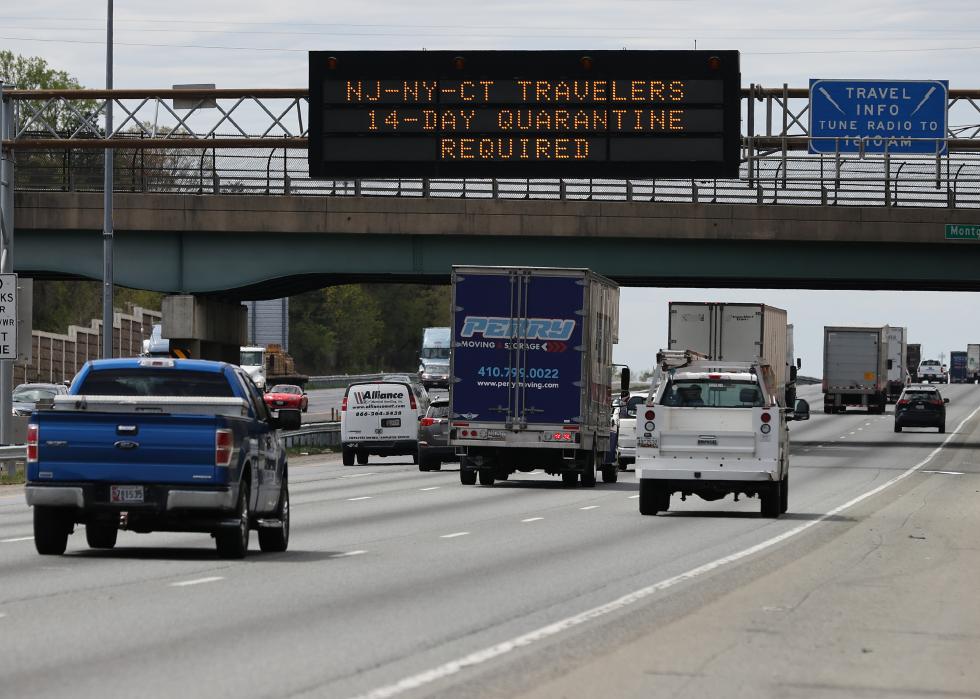
New Jersey
State COVID-19 statistics as of Dec. 13:
- 400,650 total cases (4,511 per 100,000 population)
- 17,751 total deaths (200 per 100K)
Demographic breakdown:
- White: 1,815 cases per 100K, 157 deaths per 100K
--- 67.9% of state population, 27.3% of cases, 53.2% of deaths
- Black: 3,034 cases per 100K, 252 deaths per 100K
--- 13.5% of state population, 9.1% of cases, 17.0% of deaths
- Hispanic or Latino: 4,607 cases per 100K, 196 deaths per 100K
--- 19.9% of state population, 20.3% of cases, 19.5% of deaths
- Asian: 1,571 cases per 100K, 112 deaths per 100K
--- 9.4% of state population, 3.3% of cases, 5.2% of deaths
- Unknown: 28.9% of cases, 2.8% of deaths
On Nov. 16, the state Hispanic Chamber of Commerce, Latino clergy, and leaders from other organizations held a press conference to urge the state legislature to pass NJ S2480/A4171, which would give COVID aid to the state's approximately 500,000 undocumented immigrants. The legislation would provide a one-time payment to undocumented immigrants who filed taxes in New Jersey.
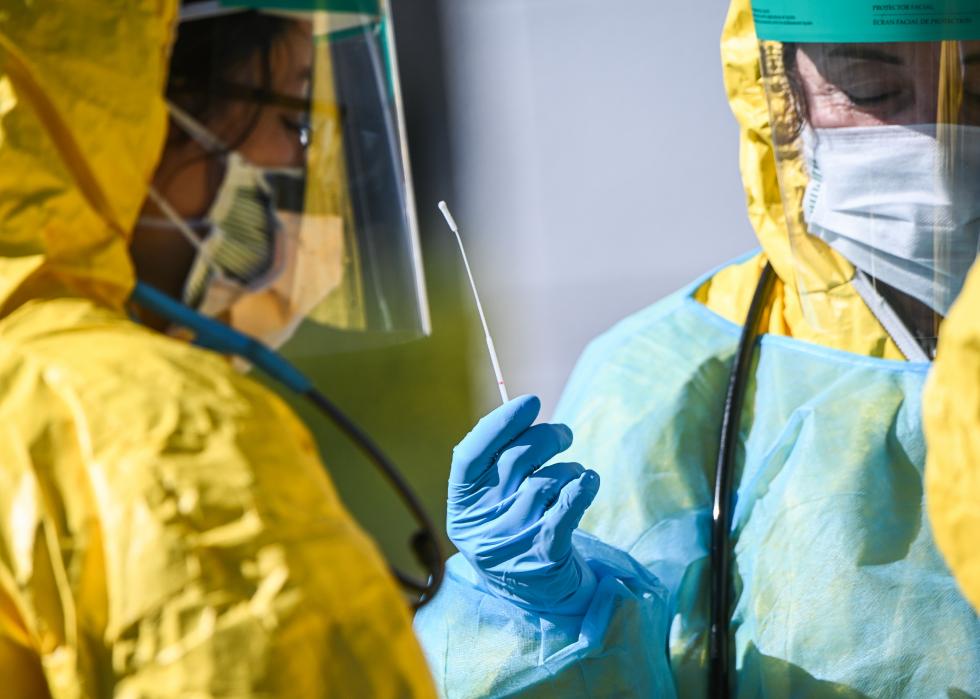
New Mexico
State COVID-19 statistics as of Dec. 13:
- 119,800 total cases (5,725 per 100,000 population)
- 1,957 total deaths (94 per 100K)
Demographic breakdown:
- White: 1,076 cases per 100K, 30 deaths per 100K
--- 74.5% of state population, 14.0% of cases, 23.5% of deaths
- Black: 3,453 cases per 100K, 56 deaths per 100K
--- 2.1% of state population, 1.2% of cases, 1.2% of deaths
- Hispanic or Latino: 4,653 cases per 100K, 61 deaths per 100K
--- 48.5% of state population, 39.4% of cases, 31.6% of deaths
- Asian: 3,040 cases per 100K, 38 deaths per 100K
--- 1.5% of state population, 0.8% of cases, 0.6% of deaths
- Native American or Alaska Native: 10,092 cases per 100K, 304 deaths per 100K
--- 9.6% of state population, 16.8% of cases, 31.0% of deaths
- Unknown: 27.7% of cases, 12.0% of deaths
On June 30, the research firm Latino Decisions released the results of a survey about the impact of COVID-19 on the Hispanic and Latino population in New Mexico. According to the results, 1 in 5 Hispanic or Latino families in the state had a household member lose their job because of the pandemic. And about half of those who were employed had their hours or pay reduced.
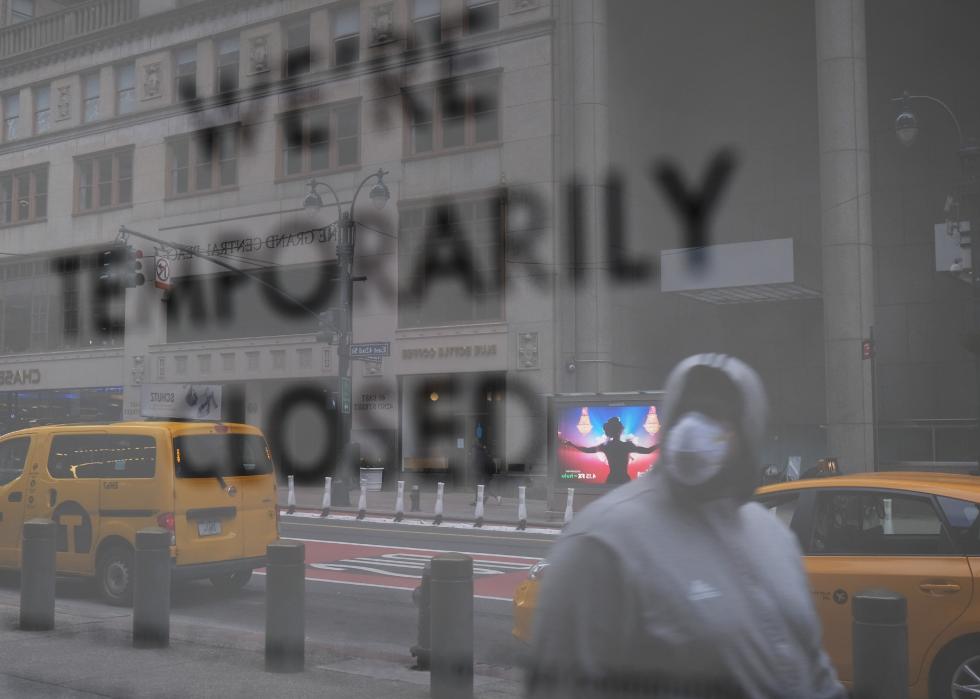
New York
State COVID-19 statistics as of Dec. 13:
- 775,160 total cases (3,951 per 100,000 population)
- 35,860 total deaths (183 per 100K)
Demographic breakdown:
- White: 89 deaths per 100K
--- 63.8% of state population, 31.0% of deaths
- Black: 262 deaths per 100K
--- 15.6% of state population, 22.5% of deaths
- Hispanic or Latino: 224 deaths per 100K
--- 18.9% of state population, 23.2% of deaths
- Asian: 135 deaths per 100K
--- 8.3% of state population, 6.1% of deaths - Unknown: 100.0% of cases, 10.7% of deaths
On Oct. 15, New York City Council Speaker Corey Johnson and Education Committee Chair Mark Treyger announced findings based on remote learning data from the New York City Department of Education. Compared to schools with a mostly white student body, those with a mostly Hispanic or Black student population were almost eight times more likely to report poor attendance or low student engagement. And schools with at least a 25% Black student body were four times as likely than those with fewer Black students to report low engagement. In response to these findings, the city council is considering two bills requiring more complete metrics about school attendance, particularly in situations involving remote learning.
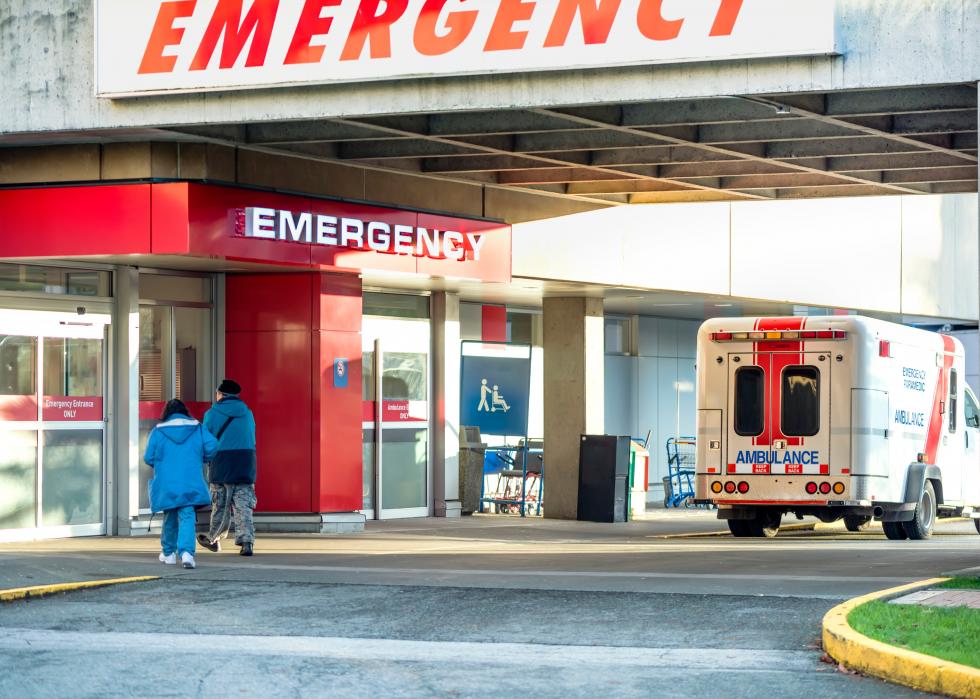
North Carolina
State COVID-19 statistics as of Dec. 13:
- 436,595 total cases (4,299 per 100,000 population)
- 5,823 total deaths (57 per 100K)
Demographic breakdown:
- White: 3,162 cases per 100K, 50 deaths per 100K
--- 68.9% of state population, 50.6% of cases, 60.7% of deaths
- Black: 3,533 cases per 100K, 70 deaths per 100K
--- 21.5% of state population, 17.6% of cases, 26.4% of deaths
- Hispanic or Latino: 7,885 cases per 100K, 45 deaths per 100K
--- 9.2% of state population, 16.9% of cases, 7.2% of deaths
- Asian: 2,372 cases per 100K, 24 deaths per 100K
--- 2.8% of state population, 1.5% of cases, 1.2% of deaths
- Native American or Alaska Native: 4,772 cases per 100K, 62 deaths per 100K
--- 1.2% of state population, 1.3% of cases, 1.3% of deaths
- Unknown: 17.9% of cases, 4.3% of deaths
North Carolina’s 10 historically Black colleges and universities have managed to keep the spread of the novel coronavirus under control. Some campuses are smaller in size and use an honor code to enforce new policies put in place to stop the spread of the virus.
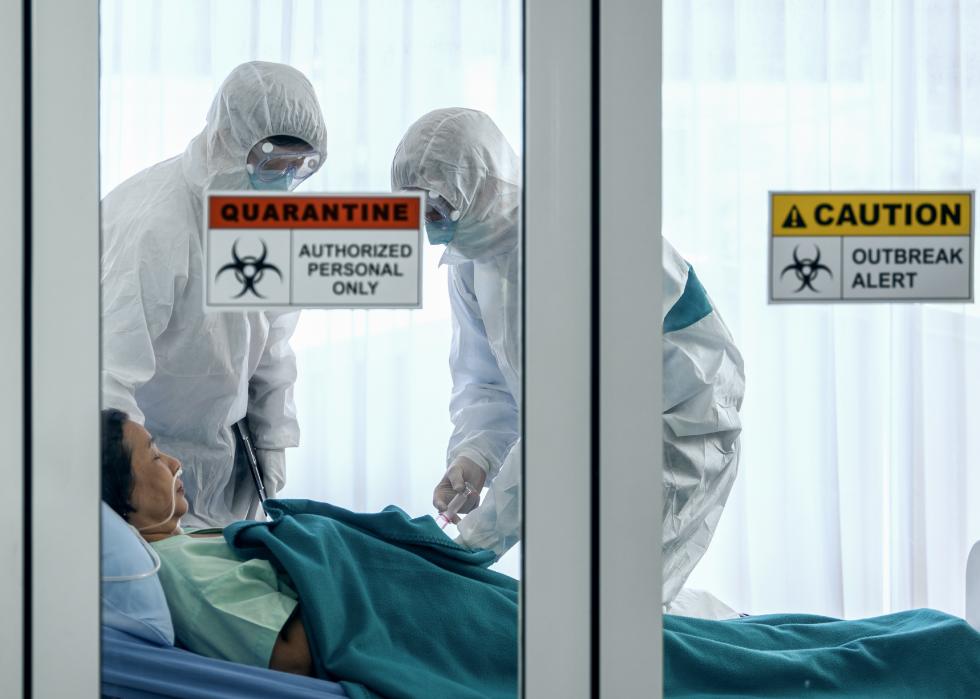
North Dakota
State COVID-19 statistics as of Dec. 13:
- 87,871 total cases (11,682 per 100,000 population)
- 1,158 total deaths (154 per 100K)
Demographic breakdown:
- White: 6,777 cases per 100K
--- 87.1% of state population, 50.5% of cases
- Black: 12,208 cases per 100K
--- 2.7% of state population, 2.8% of cases
- Asian: 10,773 cases per 100K
--- 1.4% of state population, 1.3% of cases
- Native American or Alaska Native: 8,596 cases per 100K
--- 5.2% of state population, 3.9% of cases
- Unknown: 34.5% of cases, 100.0% of deaths
On March 30, the Mandan, Hidatsa, and Arikara Nation MHA Tribal Business Council adopted measures intended to curb the spread of the novel coronavirus on the tribe’s reservation. These measures include a limit on groups of five or more people gathering in public, a dusk to dawn curfew, and a mandate to increase access to COVID-19 testing.

Ohio
State COVID-19 statistics as of Dec. 13:
- 562,727 total cases (4,834 per 100,000 population)
- 7,492 total deaths (64 per 100K)
Demographic breakdown:
- White: 3,348 cases per 100K, 61 deaths per 100K
--- 81.5% of state population, 56.5% of cases, 77.7% of deaths
- Black: 4,449 cases per 100K, 73 deaths per 100K
--- 12.4% of state population, 11.4% of cases, 14.1% of deaths
- Hispanic or Latino: 4,378 cases per 100K, 33 deaths per 100K
--- 3.7% of state population, 3.4% of cases, 1.9% of deaths
- Asian: 3,409 cases per 100K, 22 deaths per 100K
--- 2.1% of state population, 1.5% of cases, 0.7% of deaths
- Native American or Alaska Native: 2,848 cases per 100K, 17 deaths per 100K
--- 0.2% of state population, 0.1% of cases, 0.1% of deaths
- Native Hawaiian or Pacific Islander: 12,671 cases per 100K, 84 deaths per 100K
--- 0.0% of state population, 0.1% of cases, 0.0% of deaths
- Unknown: 22.3% of cases, 4.7% of deaths
On April 20, Ohio Gov. Mike DeWine created the Ohio COVID-19 Minority Health Strike Force as the pandemic disproportionately affected people of color across the state. On Aug. 19, the task force launched the More Than a Mask campaign to prevent the spread of the novel coronavirus among people of color in Ohio by providing resources and education.
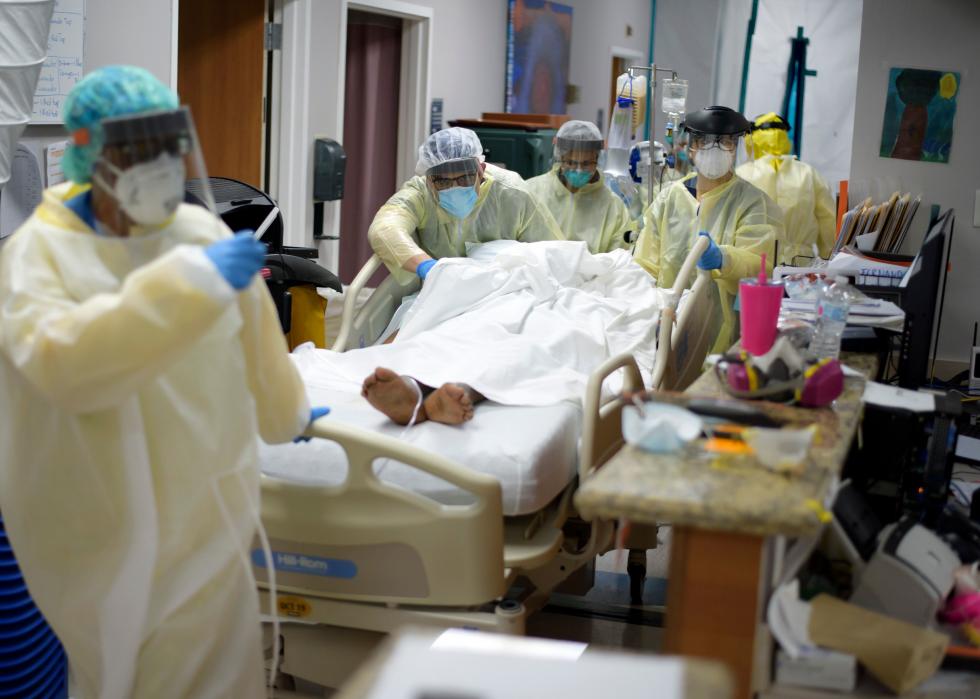
Oklahoma
State COVID-19 statistics as of Dec. 13:
- 237,668 total cases (6,066 per 100,000 population)
- 2,064 total deaths (53 per 100K)
Demographic breakdown:
- White: 4,778 cases per 100K, 52 deaths per 100K
--- 72.4% of state population, 57.1% of cases, 72.1% of deaths
- Black: 4,849 cases per 100K, 43 deaths per 100K
--- 7.3% of state population, 5.9% of cases, 6.0% of deaths
- Hispanic or Latino: 6,766 cases per 100K, 27 deaths per 100K
--- 10.4% of state population, 11.6% of cases, 5.4% of deaths
- Asian: 5,768 cases per 100K, 38 deaths per 100K
--- 2.1% of state population, 2.0% of cases, 1.6% of deaths
- Native American or Alaska Native: 7,645 cases per 100K, 61 deaths per 100K
--- 7.5% of state population, 9.5% of cases, 8.7% of deaths
- Unknown: 22.1% of cases, 8.5% of deaths
The Cherokee Nation, which occupies a 14-county reservation in northeastern Oklahoma, has managed to curb the spread of the virus. Under the leadership of the Principal Chief Chuck Hoskins Jr. and senior director for Cherokee Nation Public Health Services Lisa Pivec, the reservation has stockpiled PPE, implemented widespread testing, and has had a mask mandate in place since the spring.
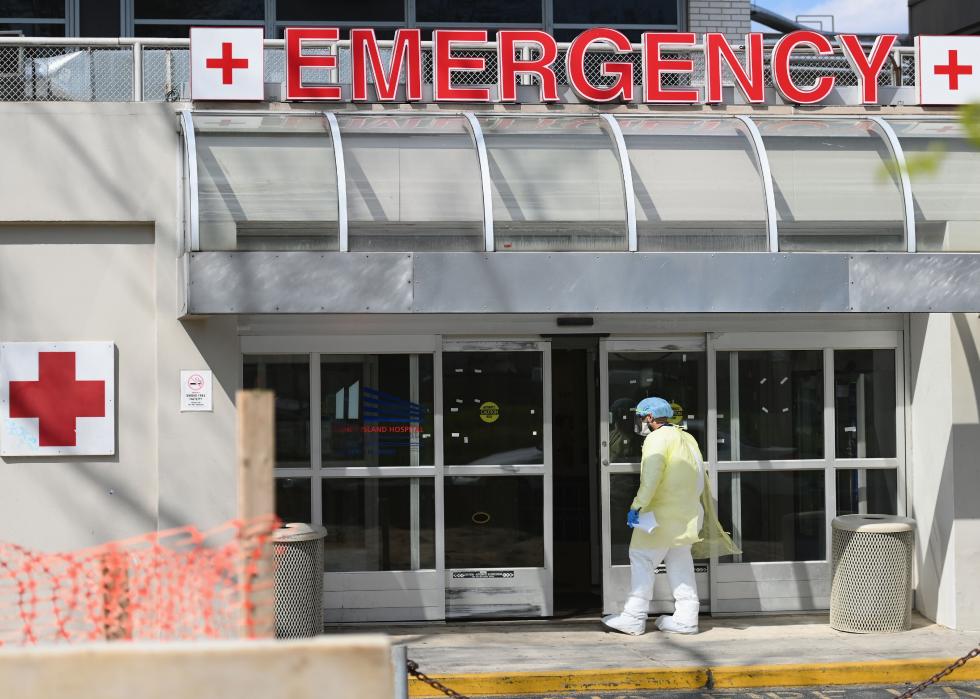
Oregon
State COVID-19 statistics as of Dec. 13:
- 93,853 total cases (2,299 per 100,000 population)
- 1,155 total deaths (28 per 100K)
Demographic breakdown:
- White: 1,212 cases per 100K, 22 deaths per 100K
--- 84.4% of state population, 44.5% of cases, 65.5% of deaths
- Black: 3,108 cases per 100K, 39 deaths per 100K
--- 1.9% of state population, 2.6% of cases, 2.6% of deaths
- Hispanic or Latino: 5,236 cases per 100K, 26 deaths per 100K
--- 12.8% of state population, 29.2% of cases, 11.6% of deaths
- Asian: 1,695 cases per 100K, 17 deaths per 100K
--- 4.3% of state population, 3.2% of cases, 2.5% of deaths
- Native American or Alaska Native: 3,901 cases per 100K, 40 deaths per 100K
--- 1.2% of state population, 2.0% of cases, 1.6% of deaths
- Native Hawaiian or Pacific Islander: 6,010 cases per 100K, 81 deaths per 100K
--- 0.4% of state population, 1.0% of cases, 1.1% of deaths
- Unknown: 19.7% of cases, 14.6% of deaths
On July 14, the Oregon Legislature’s Emergency Board announced the creation of the Oregon Cares Fund. Among other initiatives, the fund includes $62 million to help Black-owned businesses, non-profits, and individuals and families affected by the pandemic. It will disburse up to $100,000 to each Black-owned business. However, the fund has recently come under legal challenges as being unconstitutional because it only benefited people of one race.
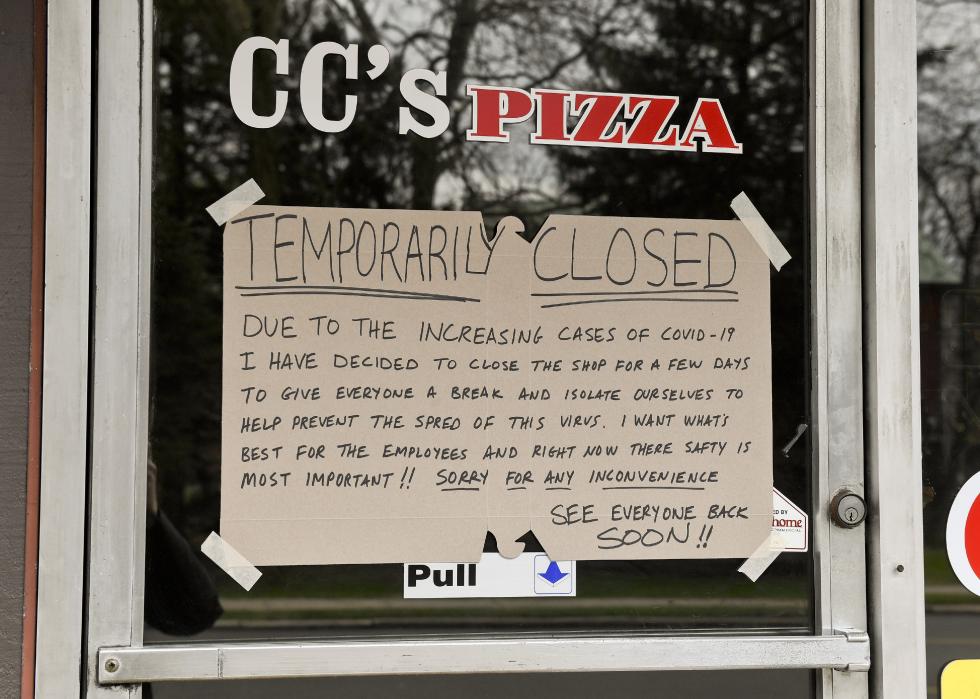
Pennsylvania
State COVID-19 statistics as of Dec. 13:
- 491,802 total cases (3,845 per 100,000 population)
- 12,565 total deaths (98 per 100K)
Demographic breakdown:
- White: 2,171 cases per 100K, 93 deaths per 100K
--- 80.8% of state population, 45.7% of cases, 76.2% of deaths
- Black: 3,509 cases per 100K, 136 deaths per 100K
--- 11.1% of state population, 10.2% of cases, 15.4% of deaths
- Hispanic or Latino: 3,626 cases per 100K, 66 deaths per 100K
--- 7.1% of state population, 6.7% of cases, 4.8% of deaths
- Asian: 2,080 cases per 100K, 52 deaths per 100K
--- 3.3% of state population, 1.8% of cases, 1.8% of deaths
- Unknown: 41.5% of cases, 2.6% of deaths
Dr. Ala Stanford, a Philadelphia-area pediatric surgeon, has launched the Black Doctors COVID-19 Consortium, an initiative of the non-profit organization It Takes Philly. The Black Doctors COVID-19 Consortium provides free COVID-19 testing and flu shots to underserved neighborhoods in Southeastern Pennsylvania.

Rhode Island
State COVID-19 statistics as of Dec. 13:
- 70,818 total cases (6,702 per 100,000 population)
- 1,509 total deaths (143 per 100K)
Demographic breakdown:
- White: 2,865 cases per 100K, 115 deaths per 100K
--- 80.9% of state population, 34.6% of cases, 65.1% of deaths
- Black: 6,587 cases per 100K, 107 deaths per 100K
--- 6.6% of state population, 6.4% of cases, 4.9% of deaths
- Hispanic or Latino: 11,950 cases per 100K, 84 deaths per 100K
--- 15.0% of state population, 26.8% of cases, 8.9% of deaths
- Asian: 2,768 cases per 100K, 45 deaths per 100K
--- 3.4% of state population, 1.4% of cases, 1.1% of deaths
- Native American or Alaska Native: 2,626 cases per 100K, 18 deaths per 100K
--- 0.5% of state population, 0.2% of cases, 0.1% of deaths
- Native Hawaiian or Pacific Islander: cases per 100K, deaths per 100K
--- 0.1% of state population, 0.0% of cases, 0.0% of deaths
- Unknown: 28.7% of cases, 19.9% of deaths
COVID-19 has particularly impacted Rhode Island’s Hispanic or Latino community. The Clinica Esperanza/Hope Clinic (CEHC) provides COVID-19 testing to the uninsured and Spanish-language educational materials about COVID-19 for patients and residents of the surrounding community. The clinic also provides Spanish language/bilingual telehealth services. And the CEHC has partnered with the City of Providence, the RI Food Bank, and the ELISHA Project to provide food for patients facing food insecurity.
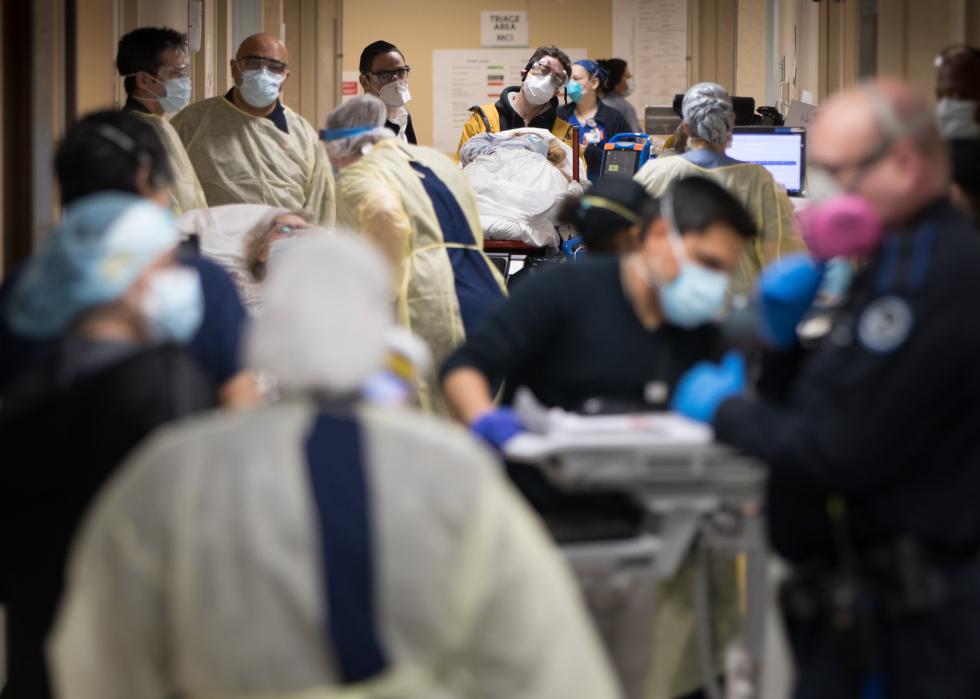
South Carolina
State COVID-19 statistics as of Dec. 13:
- 252,206 total cases (5,089 per 100,000 population)
- 4,739 total deaths (96 per 100K)
Demographic breakdown:
- White: 3,352 cases per 100K, 73 deaths per 100K
--- 67.3% of state population, 44.3% of cases, 51.4% of deaths
- Black: 4,263 cases per 100K, 111 deaths per 100K
--- 27.0% of state population, 22.6% of cases, 31.4% of deaths
- Hispanic or Latino: 6,166 cases per 100K, 50 deaths per 100K
--- 5.6% of state population, 6.7% of cases, 2.9% of deaths
- Asian: 3,171 cases per 100K, 45 deaths per 100K
--- 1.5% of state population, 0.9% of cases, 0.7% of deaths
- Unknown: 23.5% of cases, 13.7% of deaths
In the spring, the South Carolina African American Heritage Commission launched Black Carolinians Speak: Portrait of a Pandemic. This project documents the Black experience in South Carolina during COVID-19 through first-person testimonies, letters, photographs, videos, and music. The commission will collect stories during the pandemic, and conduct oral history interviews when feasible.
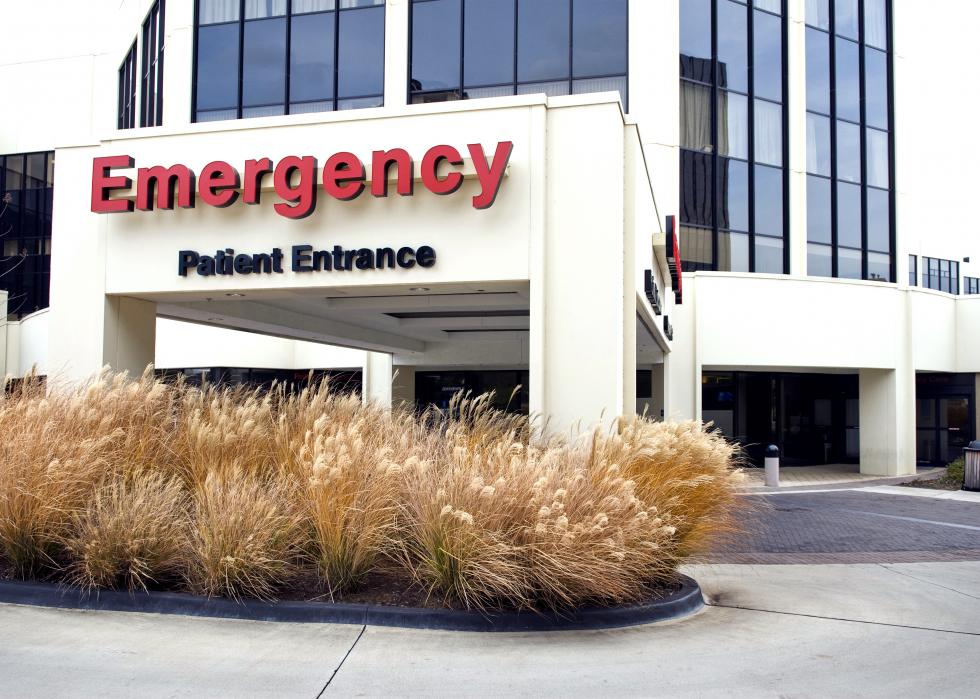
South Dakota
State COVID-19 statistics as of Dec. 13:
- 91,038 total cases (10,533 per 100,000 population)
- 1,259 total deaths (146 per 100K)
Demographic breakdown:
- White: 8,445 cases per 100K, 132 deaths per 100K
--- 84.5% of state population, 67.7% of cases, 76.8% of deaths
- Black: 12,284 cases per 100K, 31 deaths per 100K
--- 1.9% of state population, 2.2% of cases, 0.4% of deaths
- Hispanic or Latino: 9,780 cases per 100K, 41 deaths per 100K
--- 3.7% of state population, 3.4% of cases, 1.0% of deaths
- Asian: 9,179 cases per 100K, 103 deaths per 100K
--- 1.5% of state population, 1.3% of cases, 1.0% of deaths
- Native American or Alaska Native: 14,795 cases per 100K, 206 deaths per 100K
--- 8.7% of state population, 12.2% of cases, 12.3% of deaths
- Unknown: 10.9% of cases, 7.5% of deaths
Although the South Dakota Department of Health doesn’t break down data about job-related COVID-19 cases by race, it does track the overall number of cases at the meat packing plants in the state. As of mid-July, almost 1,300 employees at four of these facilities were infected with the novel coronavirus. Many of them were immigrants or people of color.
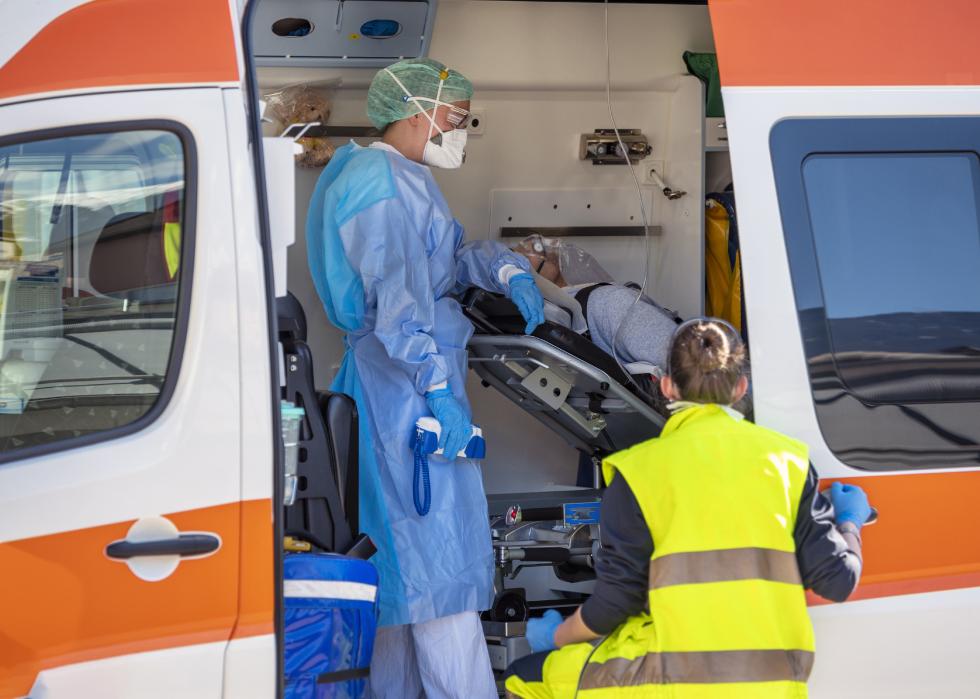
Tennessee
State COVID-19 statistics as of Dec. 13:
- 454,305 total cases (6,831 per 100,000 population)
- 5,462 total deaths (82 per 100K)
Demographic breakdown:
- White: 5,028 cases per 100K, 76 deaths per 100K
--- 77.7% of state population, 57.2% of cases, 72.2% of deaths
- Black: 5,539 cases per 100K, 97 deaths per 100K
--- 16.8% of state population, 13.6% of cases, 19.8% of deaths
- Hispanic or Latino: 9,967 cases per 100K, 54 deaths per 100K
--- 5.3% of state population, 7.7% of cases, 3.5% of deaths
- Asian: 3,272 cases per 100K, 30 deaths per 100K
--- 1.7% of state population, 0.8% of cases, 0.6% of deaths
- Native American or Alaska Native: 2,953 cases per 100K, 34 deaths per 100K
--- 0.3% of state population, 0.1% of cases, 0.1% of deaths
- Native Hawaiian or Pacific Islander: 7,777 cases per 100K, 79 deaths per 100K
--- 0.1% of state population, 0.1% of cases, 0.1% of deaths
- Unknown: 19.0% of cases, 3.8% of deaths
Meharry Medical College, a historically Black medical school in Nashville, in October called for the participation of people of color in a COVID-19 vaccine trial. Meharry CEO James Hildreth said the goal is to enroll about 500 people in the trial, and that he plans to participate.
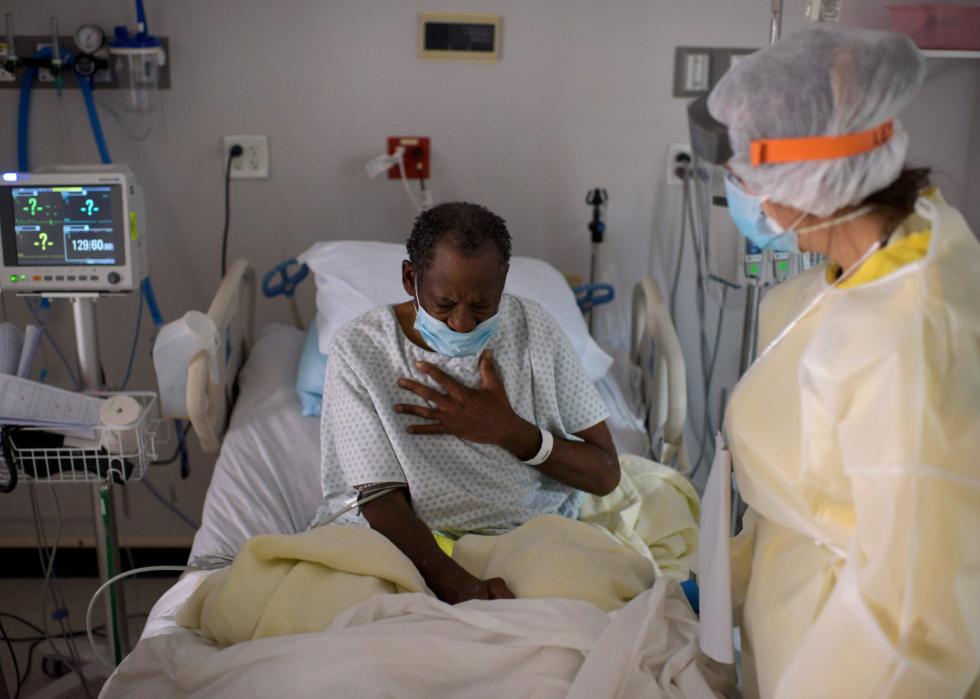
Texas
State COVID-19 statistics as of Dec. 13:
- 1.5 million total cases (5,281 per 100,000 population)
- 23,911 total deaths (86 per 100K)
Demographic breakdown:
- White: 94 cases per 100K, 40 deaths per 100K
--- 74.3% of state population, 1.3% of cases, 34.7% of deaths
- Black: 314 cases per 100K, 71 deaths per 100K
--- 12.1% of state population, 0.7% of cases, 10.1% of deaths
- Hispanic or Latino: 231 cases per 100K, 113 deaths per 100K
--- 39.2% of state population, 1.7% of cases, 51.5% of deaths
- Asian: 68 cases per 100K, 32 deaths per 100K
--- 4.7% of state population, 0.1% of cases, 1.7% of deaths
- Unknown: 96.2% of cases, 1.5% of deaths
Three years ago the Texas legislature closed the Office of Minority Health Statistics and Engagement, which may have helped save lives during the pandemic. The office received about $2 million per year from the state. Some legislators in the state are calling for the funding to revive it.

Utah
State COVID-19 statistics as of Dec. 13:
- 233,904 total cases (7,681 per 100,000 population)
- 1,055 total deaths (35 per 100K)
Demographic breakdown:
- White: 5,233 cases per 100K, 26 deaths per 100K
--- 86.4% of state population, 58.9% of cases, 63.7% of deaths
- Black: 9,269 cases per 100K, 36 deaths per 100K
--- 1.2% of state population, 1.4% of cases, 1.2% of deaths
- Hispanic or Latino: 13,382 cases per 100K, 44 deaths per 100K
--- 13.9% of state population, 24.1% of cases, 17.4% of deaths
- Asian: 6,647 cases per 100K, 49 deaths per 100K
--- 2.3% of state population, 2.0% of cases, 3.2% of deaths
- Native American or Alaska Native: 10,234 cases per 100K, 144 deaths per 100K
--- 1.1% of state population, 1.4% of cases, 4.5% of deaths
- Native Hawaiian or Pacific Islander: 24,133 cases per 100K, 140 deaths per 100K
--- 0.9% of state population, 2.8% of cases, 3.6% of deaths
- Unknown: 10.4% of cases, 5.9% of deaths
The Navajo Nation and the Utah Navajo Health System have established fundraising and food donation programs to help elderly tribe members and those quarantined at home. And the nine women who run the Navajo Mountain Community Health Center have been working together to treat patients while keeping them safe. They have also been making home visits and food deliveries.
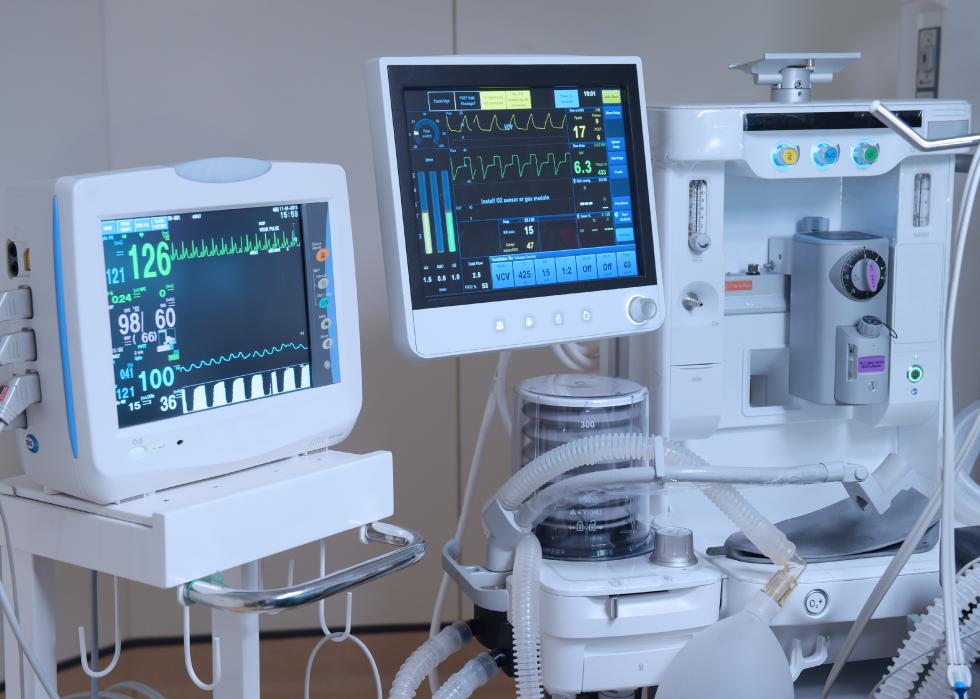
Vermont
State COVID-19 statistics as of Dec. 13:
- 5,753 total cases (921 per 100,000 population)
- 95 total deaths (15 per 100K)
Demographic breakdown:
- White: 780 cases per 100K, 14 deaths per 100K
--- 94.3% of state population, 80.0% of cases, 86.3% of deaths
- Black: 3,276 cases per 100K, 12 deaths per 100K
--- 1.3% of state population, 4.6% of cases, 1.1% of deaths
- Hispanic or Latino: 1,096 cases per 100K, deaths per 100K
--- 1.9% of state population, 2.2% of cases, 0.0% of deaths
- Asian: 2,420 cases per 100K, 19 deaths per 100K
--- 1.7% of state population, 4.4% of cases, 2.1% of deaths
- Native American or Alaska Native: 285 cases per 100K, 47 deaths per 100K
--- 0.3% of state population, 0.1% of cases, 1.1% of deaths
- Unknown: 9.3% of cases, 7.4% of deaths
On June 1, Vermont Gov. Phil Scott announced the formation of the Racial Equity Task Force to promote inclusivity and equality in Vermont, especially regarding the state's response to COVID-19. In July, Kyendamina (Cleophace) Mukeba, a 2012 graduate of St. Michael's College in Colchester, was appointed to serve on the task force as a community representative.
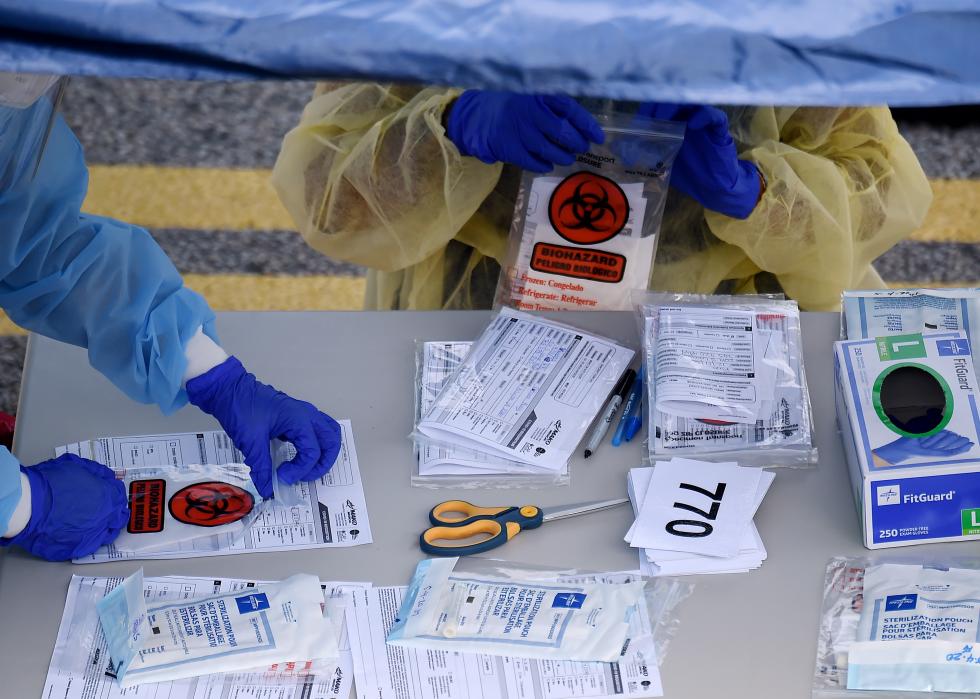
Virginia
State COVID-19 statistics as of Dec. 13:
- 281,909 total cases (3,351 per 100,000 population)
- 4,411 total deaths (52 per 100K)
Demographic breakdown:
- White: 1,826 cases per 100K, 44 deaths per 100K
--- 68.0% of state population, 37.1% of cases, 57.7% of deaths
- Black: 3,060 cases per 100K, 68 deaths per 100K
--- 19.2% of state population, 17.5% of cases, 24.8% of deaths
- Hispanic or Latino: 6,656 cases per 100K, 47 deaths per 100K
--- 9.2% of state population, 18.2% of cases, 8.2% of deaths
- Asian: 1,706 cases per 100K, 33 deaths per 100K
--- 6.3% of state population, 3.2% of cases, 4.0% of deaths
- Native American or Alaska Native: 1,563 cases per 100K, 30 deaths per 100K
--- 0.3% of state population, 0.1% of cases, 0.2% of deaths
- Unknown: 20.2% of cases, 3.2% of deaths
On June 16, the state Department of Health changed the way it reported the race and ethnicity data for COVID-19 cases and deaths in Virginia. To gather more specific data about race and ethnicity while maintaining patient privacy, the state added categories of Latino, Asian or Pacific Islander, Native American, and Two or More Races to the existing categories of White, Black, and Other Race.
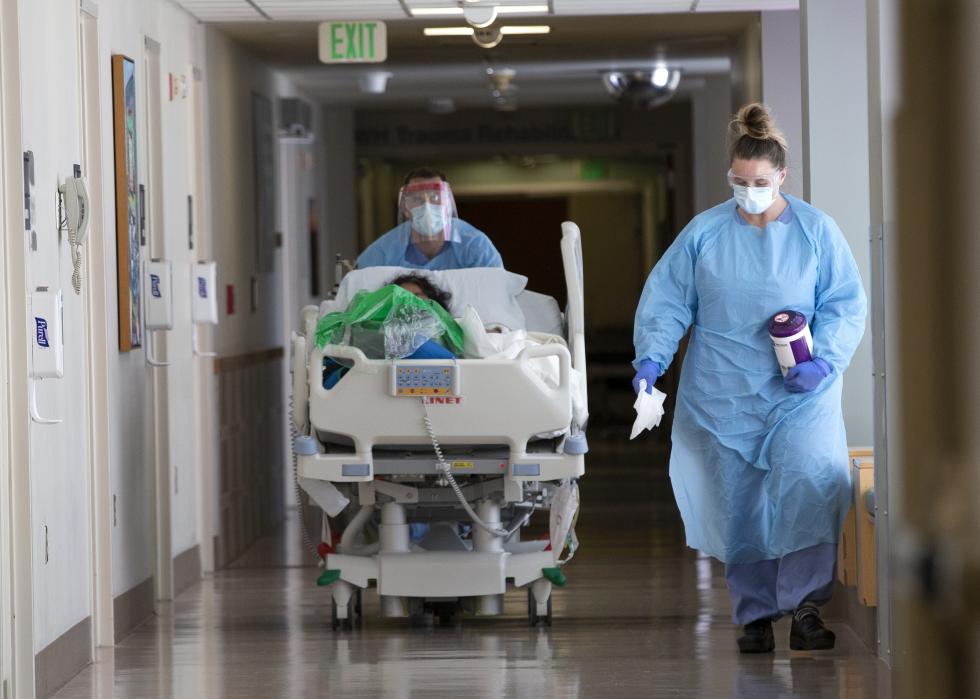
Washington
State COVID-19 statistics as of Dec. 13:
- 202,063 total cases (2,770 per 100,000 population)
- 2,879 total deaths (39 per 100K)
Demographic breakdown:
- White: 968 cases per 100K, 36 deaths per 100K
--- 76.0% of state population, 26.6% of cases, 69.6% of deaths
- Black: 2,525 cases per 100K, 32 deaths per 100K
--- 3.7% of state population, 3.4% of cases, 3.0% of deaths
- Hispanic or Latino: 4,443 cases per 100K, 42 deaths per 100K
--- 12.5% of state population, 20.0% of cases, 13.3% of deaths
- Asian: 1,114 cases per 100K, 33 deaths per 100K
--- 8.3% of state population, 3.3% of cases, 6.9% of deaths
- Native American or Alaska Native: 1,783 cases per 100K, 63 deaths per 100K
--- 1.3% of state population, 0.8% of cases, 2.1% of deaths
- Native Hawaiian or Pacific Islander: 5,006 cases per 100K, 96 deaths per 100K
--- 0.7% of state population, 1.2% of cases, 1.6% of deaths
- Unknown: 42.0% of cases, 0.5% of deaths
On May 27, public officials, nonprofits, and community leaders launched All In WA, a coordinated relief effort to help Washington residents affected by COVID-19. All In WA has partnered with Powerof.org so people can donate to the organization of their choice, including the Latino Community Fund of Washington State COVID-19 Resiliency Fund, the Na’ah Illahee Fund Native Community Crisis Fund, and the Black Future Co-op Fund.
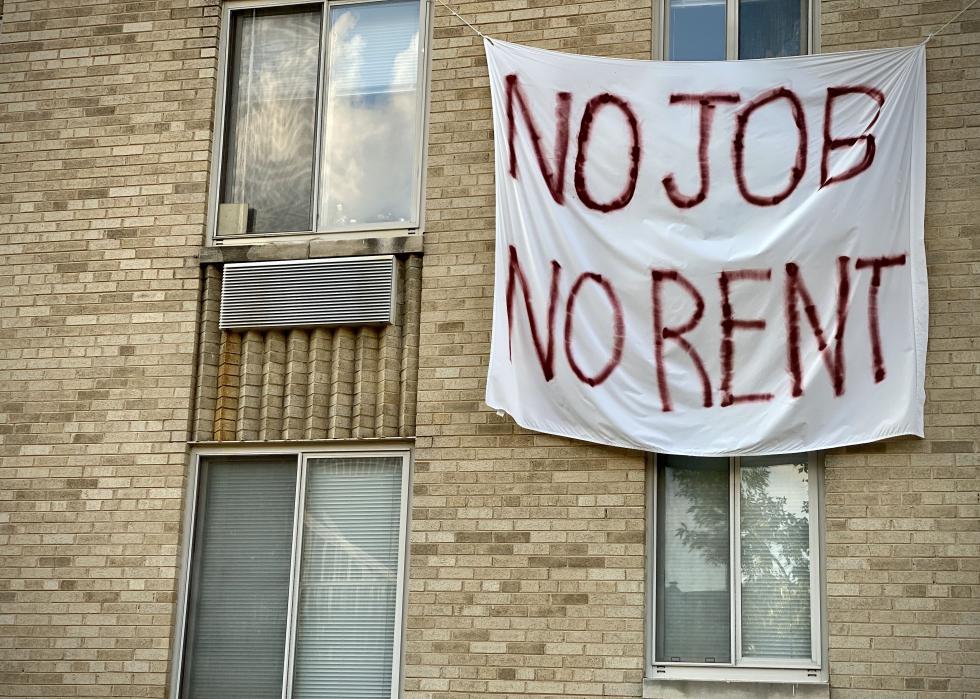
Washington D.C.
State COVID-19 statistics as of Dec. 13:
- 24,874 total cases (3,634 per 100,000 population)
- 715 total deaths (104 per 100K)
Demographic breakdown:
- White: 2,138 cases per 100K, 26 deaths per 100K
--- 41.0% of state population, 24.1% of cases, 10.2% of deaths
- Black: 3,663 cases per 100K, 165 deaths per 100K
--- 46.9% of state population, 47.3% of cases, 74.0% of deaths
- Hispanic or Latino: 7,628 cases per 100K, 126 deaths per 100K
--- 10.9% of state population, 22.9% of cases, 13.1% of deaths
- Asian: 1,673 cases per 100K, 34 deaths per 100K
--- 3.9% of state population, 1.8% of cases, 1.3% of deaths
- Native American or Alaska Native: 2,559 cases per 100K, deaths per 100K
--- 0.3% of state population, 0.2% of cases, 0.0% of deaths
- Native Hawaiian or Pacific Islander: 18,824 cases per 100K, deaths per 100K
--- 0.0% of state population, 0.3% of cases, 0.0% of deaths
- Unknown: 0.7% of cases, 0.0% of deaths
In November, the Black Coalition Against COVID, based in Washington, D.C., posted “A Love Letter to Black America,” from Black health care professionals. A collaboration with historically Black colleges and universities, this initiative is meant to open a dialog about COVID-19 among members of the Black community. The coalition also provides COVID-19 resources for the Washington D.C. Black community.

West Virginia
State COVID-19 statistics as of Dec. 13:
- 63,217 total cases (3,456 per 100,000 population)
- 968 total deaths (53 per 100K)
Demographic breakdown:
- White: 2,343 cases per 100K, 40 deaths per 100K
--- 93.2% of state population, 63.2% of cases, 70.9% of deaths
- Black: 2,588 cases per 100K, 27 deaths per 100K
--- 3.6% of state population, 2.7% of cases, 1.9% of deaths
- Unknown: 32.7% of cases, 26.3% of deaths
In May, West Virginia Gov. Jim Justice formed the COVID-19 Advisory Commission on African American Disparities. The 12-member task force is under the purview of the WV Herbert Henderson Office of Minority Affairs, and is made up of community and religious groups, health care systems, and state legislators. The task force is charged with increasing the availability of free COVID-19 testing in underserved communities.
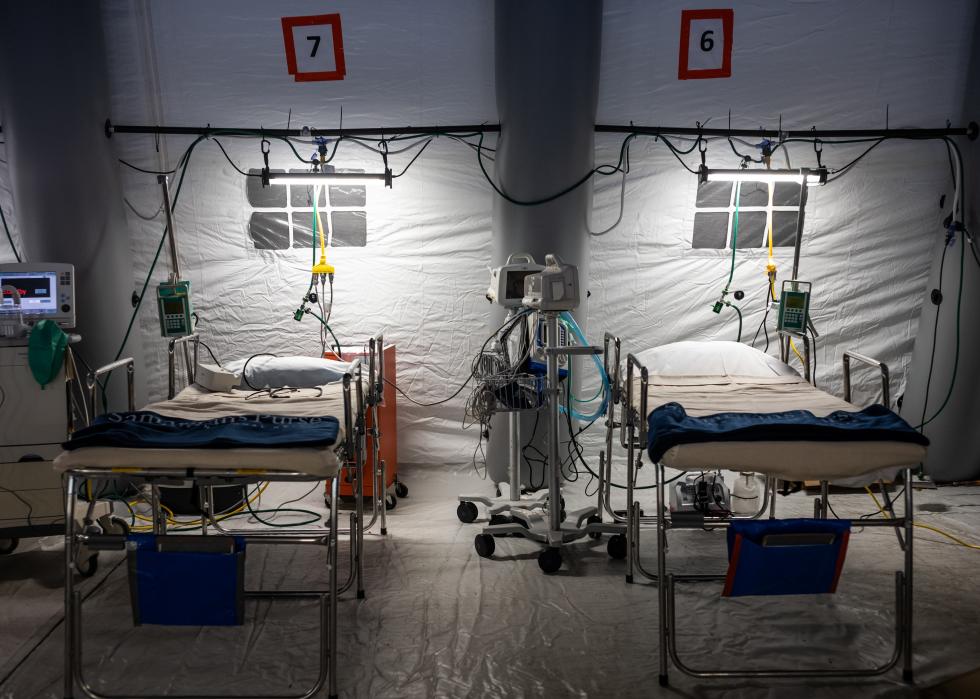
Wisconsin
State COVID-19 statistics as of Dec. 13:
- 468,956 total cases (8,116 per 100,000 population)
- 4,339 total deaths (75 per 100K)
Demographic breakdown:
- White: 7,158 cases per 100K, 74 deaths per 100K
--- 85.6% of state population, 75.5% of cases, 84.0% of deaths
- Black: 8,585 cases per 100K, 88 deaths per 100K
--- 6.4% of state population, 6.8% of cases, 7.4% of deaths
- Hispanic or Latino: 13,053 cases per 100K, 70 deaths per 100K
--- 6.7% of state population, 10.7% of cases, 6.2% of deaths
- Asian: 6,430 cases per 100K, 46 deaths per 100K
--- 2.8% of state population, 2.2% of cases, 1.7% of deaths
- Native American or Alaska Native: 11,634 cases per 100K, 121 deaths per 100K
--- 0.9% of state population, 1.3% of cases, 1.4% of deaths
- Unknown: 8.6% of cases, 3.7% of deaths
On May 7, Wisconsin Gov. Tony Evers told the Milwaukee Journal Sentinel that free COVID-19 testing would be made available to Black, Hispanic or Latino, and Native American communities in the state. Members of the Wisconsin National Guard conduct testing at community testing sites.
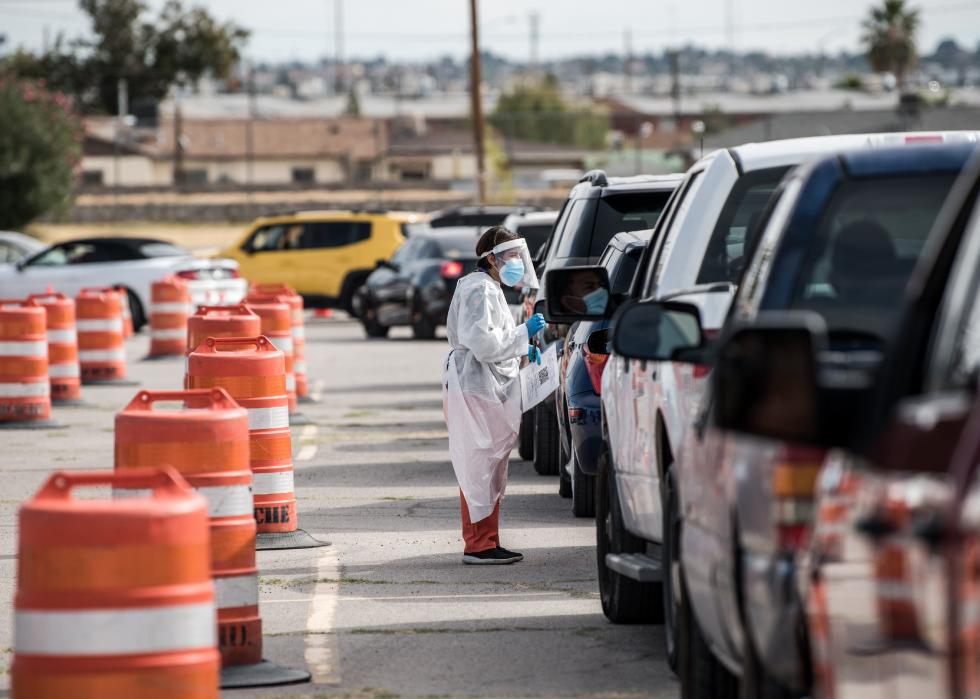
Wyoming
State COVID-19 statistics as of Dec. 13:
- 39,360 total cases (6,765 per 100,000 population)
- 321 total deaths (55 per 100K)
Demographic breakdown:
- White: 3,753 cases per 100K, 47 deaths per 100K
--- 91.4% of state population, 50.7% of cases, 78.5% of deaths
- Black: 5,650 cases per 100K, 18 deaths per 100K
--- 1.0% of state population, 0.8% of cases, 0.3% of deaths
- Hispanic or Latino: 5,391 cases per 100K, 33 deaths per 100K
--- 9.8% of state population, 7.8% of cases, 5.9% of deaths
- Asian: 4,289 cases per 100K, 84 deaths per 100K
--- 0.8% of state population, 0.5% of cases, 1.2% of deaths
- Native American or Alaska Native: 12,503 cases per 100K, 242 deaths per 100K
--- 2.4% of state population, 4.5% of cases, 10.6% of deaths
- Native Hawaiian or Pacific Islander: 19,852 cases per 100K, 186 deaths per 100K
--- 0.1% of state population, 0.3% of cases, 0.3% of deaths
- Unknown: 25.6% of cases, 8.1% of deaths
On April 1, tribal leaders on the Wind River Indian Reservation, home to the Eastern Shoshone and Northern Arapaho tribes, issued a strict stay-at-home order to control the spread of the novel coronavirus. Much of the reservation is located in Fremont County, which was particularly hard hit at the beginning of the pandemic. But by Aug. 4, viral spread slowed enough to allow the Wind River Inter-Tribal Council to pass a resolution modifying the order, so that offices, businesses, and casinos could reopen.



